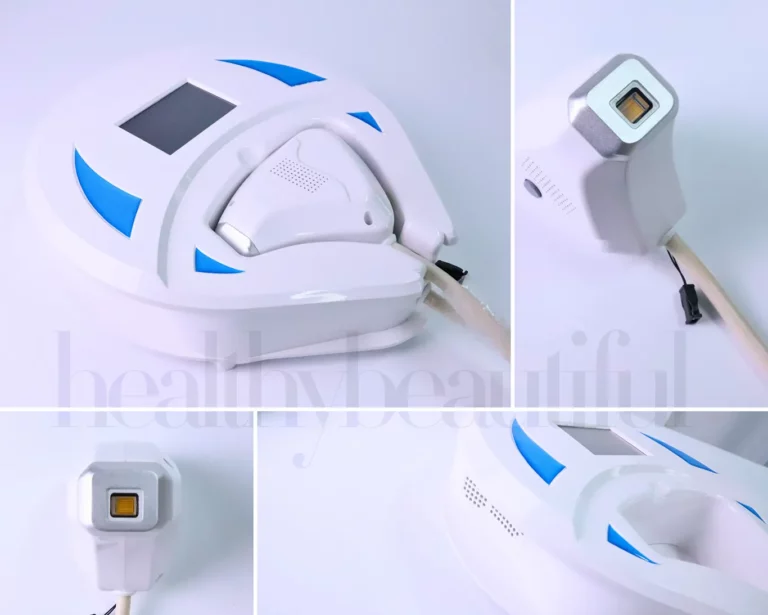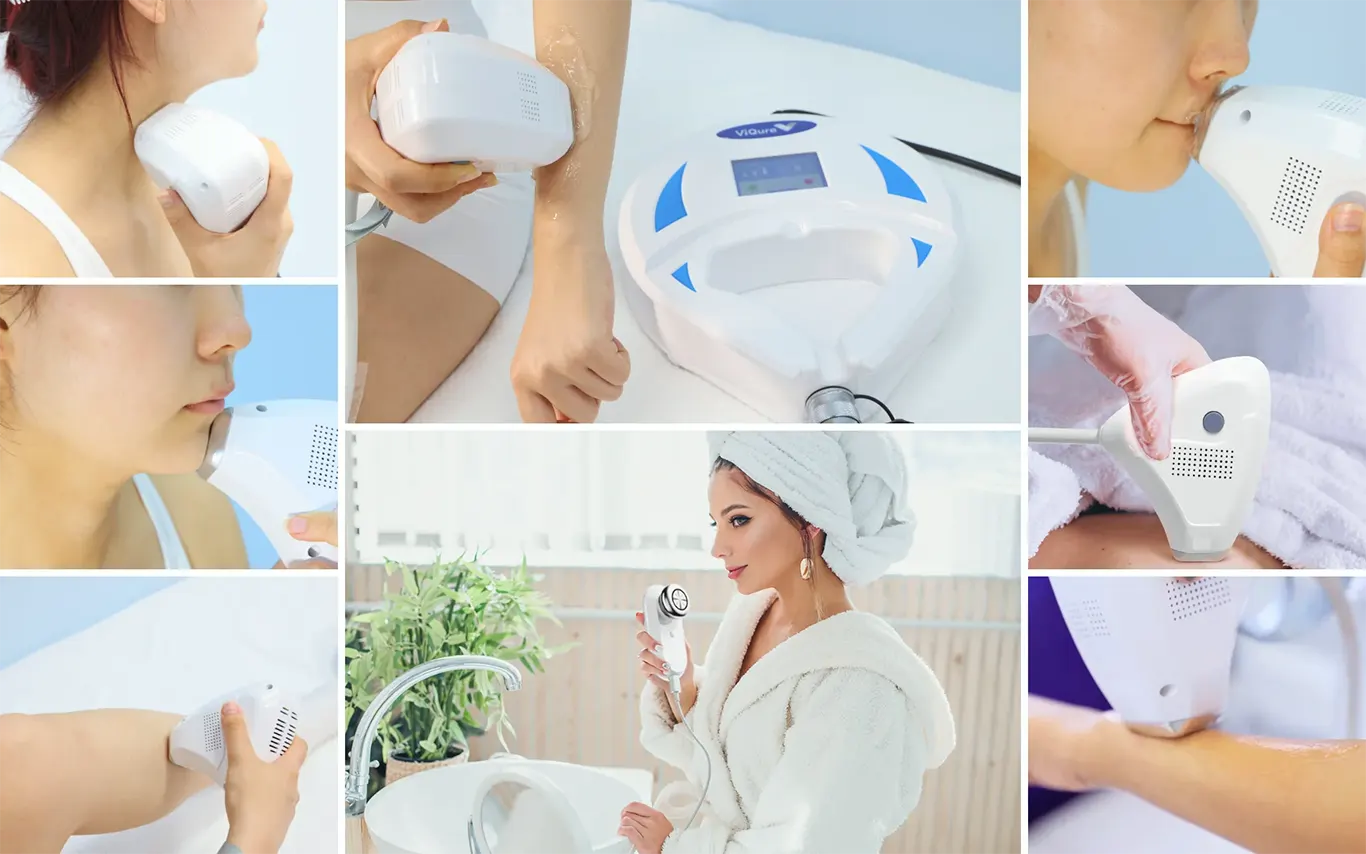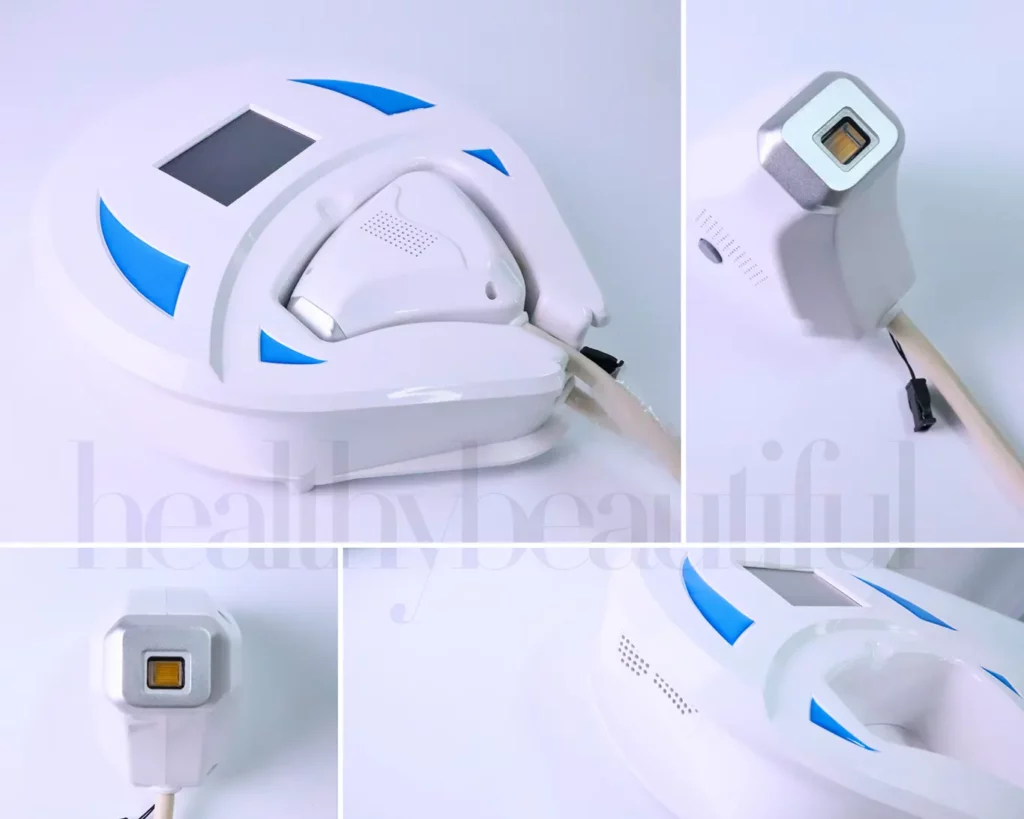
Ask the Expert: Is the ViQure EpiPro right for you?
BY SAMANTHA WELCH, ESTHETICIAN
As an esthetician, I've operated and tested over 35 professional laser hair removal machines and IPL devices alike.
Given that the ViQure EpiPro is marketed as both a professional and an at-home device, our team has conducted comprehensive reviews from both perspectives.
By doing so, we are able to provide you with insights and recommendations tailored to your needs.
As a professional machine used in salons
The ViQure EpiPro Laser is positioned as an accessible and cost-effective option compared to high-end, advanced laser hair removal machines that cost $5,000 to $50,000 USD on average.
It offers a budget-friendly alternative without compromising quality and effectiveness. However, keep in mind that at this price point there will be limitations in terms of features, flexibility, and power compared to larger, more expensive equipment.
It’s best to use the highest intensity you can for better results.
As an at-home laser hair removal/skin rejuvenation device
This is where this product really shines. The ViQure EpiPro is an incredibly superior device compared to all IPL devices on the market. It brings all the advantages of a commercial machine and successfully translates them into a safe, intuitive, portable device.
The ViQure EpiPro uses a diode laser instead of IPL, which gives it a significant advantage in effectiveness and precision. It can be used on all skin types and all body parts, including areas off-limits to at-home IPL like above the cheekbones and a full Brazilian.
The ViQure Laser is also built with exceptional durability, and offers a wide range of parameters and features we've only seen in professional machines so far. Its ergonomic design and user-friendly interface also make it easy to handle and operate, ensuring a comfortable and convenient experience even for beginners.
With the ViQure Laser, you can have the superior performance of a professional-grade machine in an at-home device.
The only drawback is its price point, as it costs significantly more than regular handheld IPLs.
However, if you have the budget to invest, the ViQure EpiPro is the most foolproof and effective at-home laser hair removal device you can buy.
Related: Laser Hair Removal Cost & Prices (National Statistics Report)
- Ask the Expert: Is the ViQure EpiPro right for you?
- Quick Overview: ViQure EpiPro – 808nm Diode Laser Hair Removal Machine for Home & Salon Use
- Viable Alternatives
- Reviews: Short-term & Long-term Results, Before & After
- Product Overview: Our Experience & Honest Review
- Package Contents: Unboxing the ViQure EpiPro Laser
- Product Design & Using the ViQure EpiPro 808nm Diode Laser Hair Removal Machine
- Operations: Using the ViQure EpiPro for Laser Hair Removal & Skin Rejuvenation
- Product Technology
- Safety
- Instructions & User Guides
- References:
- ViQure EpiPro – 808nm Diode Laser Hair Removal Review
- ViQure Coupon Codes
Quick Overview: ViQure EpiPro – 808nm Diode Laser Hair Removal Machine for Home & Salon Use
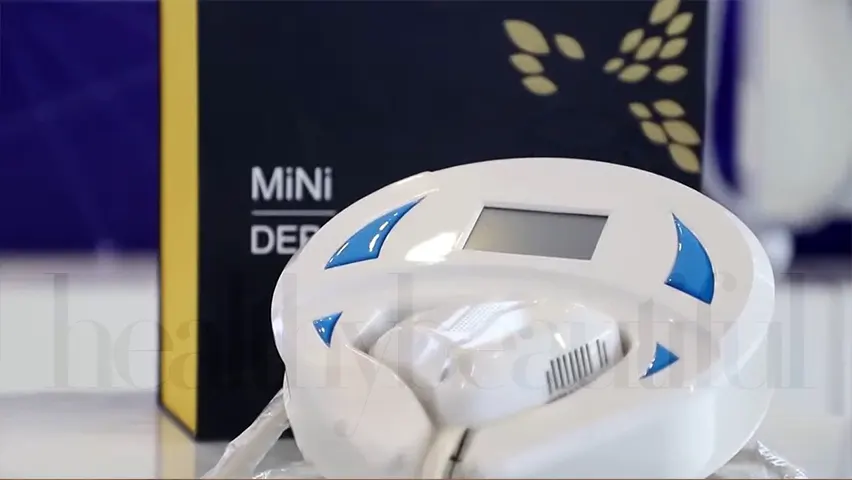
Verdict: The most effective at-home laser hair removal device for all skin types & body parts
Best for: All skin types, All body areas including between the eyebrows & Brazilian (No IPL device is FDA-approved safe for treating above the cheekbones & beyond bikini); Stubborn hair prone to re-growth with IPL, Multi-function device: Permanent Hair Reduction + Skin Rejuvenation
Hair-Removing Technology: Diode Laser Technology
Energy Fluence / Power: Max 20 J/cm²
No. of Flashes: 5 Million built-in pulses, the highest pulse count among all at-home laser hair removal devices
Safety Mechanism: Cooling System: Semiconductor + Wind Cooling (0°C~5°C), FREE therapy glasses & goggles included, Cooling gel (sold separately)
Skin Tone Coverage: Fitzpatrick I-VI compatible, All skin tones. (Note that most IPL devices cannot treat dark skin tones)
Hair Color Coverage: All hair colors, including gray, white, blonde, and red hair (requires more treatment sessions)
PROS:
- Multi-functional device: offers hair removal & skin rejuvenation
- Permanent hair reduction using high-energy diode laser, not IPL
- For professional and home use
- Less number of treatments required to see results: Diode lasers only need once-a-month sessions vs. IPL devices that needs weekly sessions on average for 3-6 months
- Effective for all skin types, unlike most IPLs that can only treat light to medium skin tones and dark
- Can be used on all hair colors, unlike IPL which cna only treat dark hair
- Can be used on all major body parts, including areas off limits to IPL
- Advanced TEC (Thermoelectric Cooling) Cooling for safer and pain-free treatments
- Highest pulse count of any at-home laser hair device at 5,000,000 shots. Long Service Life.
- 3.5-Inch LCD Touch Screen for easy operations and intuitive control
- 808 nm ±10% Long-pulse Wavelength, reaches deep-seated strong roots
- Compact, durable build made from medical plastics
- Uses SHR (Super Hair Removal) Technique for safer, more effective treatments
- Adjustable frequency, energy fluence, pulse duration for comfort and efficacy
- Free therapy glasses included for operator and safety goggles client
- FDA and CE Approved Quality
CONS:
- Requires cooling gel (sold separately)
- Price point is between a professional machine and an at-home device. This means it’s an affordable choice for businesses but can be an investment for individual use.
- Requires multiple passes in an area for 3-5 minutes, but doesn’t have a built-in timer
ViQure Coupon Codes
Get the best price with the latest premium promo and discount codes when you buy the ViQure EpiPro online. Sales and special gifts are limited-time offers.

Viable Alternatives
If you don't think the ViQure Laser is right for you, below are some of the other devices our estheticians have reviewed and highly recommend.
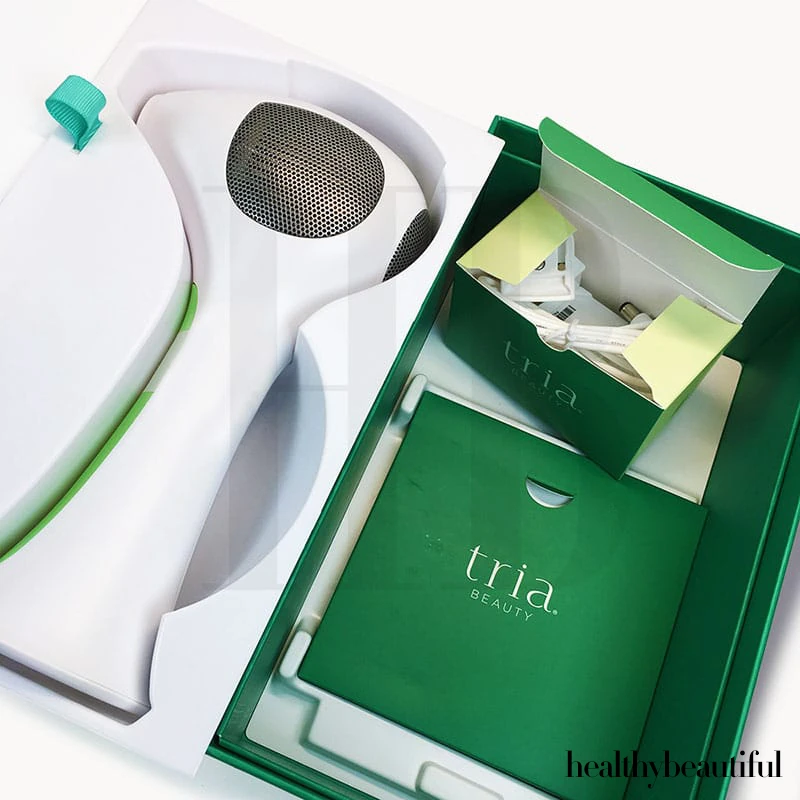
ViQure EpiPro vs. Tria 4x: The Esthetician's Guide
Diode vs. Diode
The Tria 4x is one of the most powerful at-home laser hair removal devices.
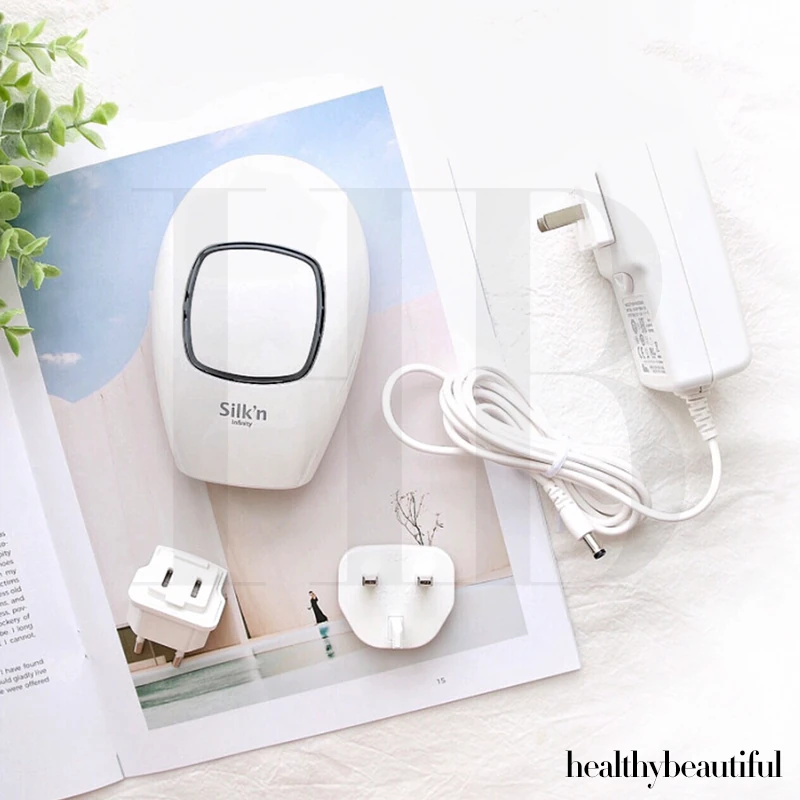
ViQure EpiPro vs. Silk'n Infinity: The Esthetician's Guide
Diode vs. eHPL
The Silk'n Infinity is one of the safest IPL devices for dark complexions (black skin, brown skin).
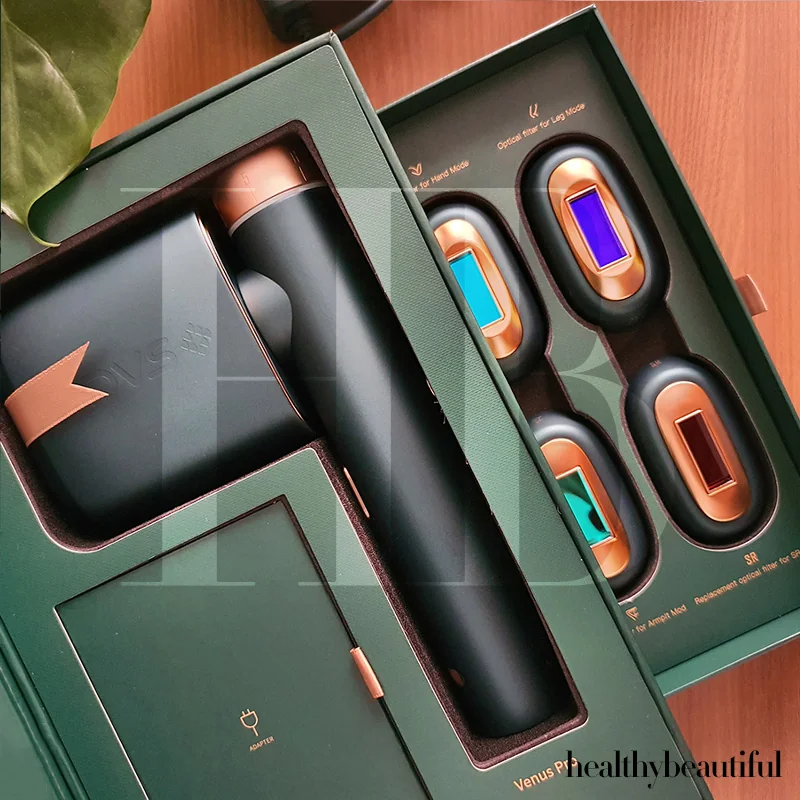
ViQure EpiPro vs. JOVS Venus Pro: The Esthetician's Guide
Diode vs. IPL
The JOVS Venus Pro is the most ergonomically-designed home device. It features cutting-edge OPT, MFCPT, & Sapphire ICE tech for painless treatments.
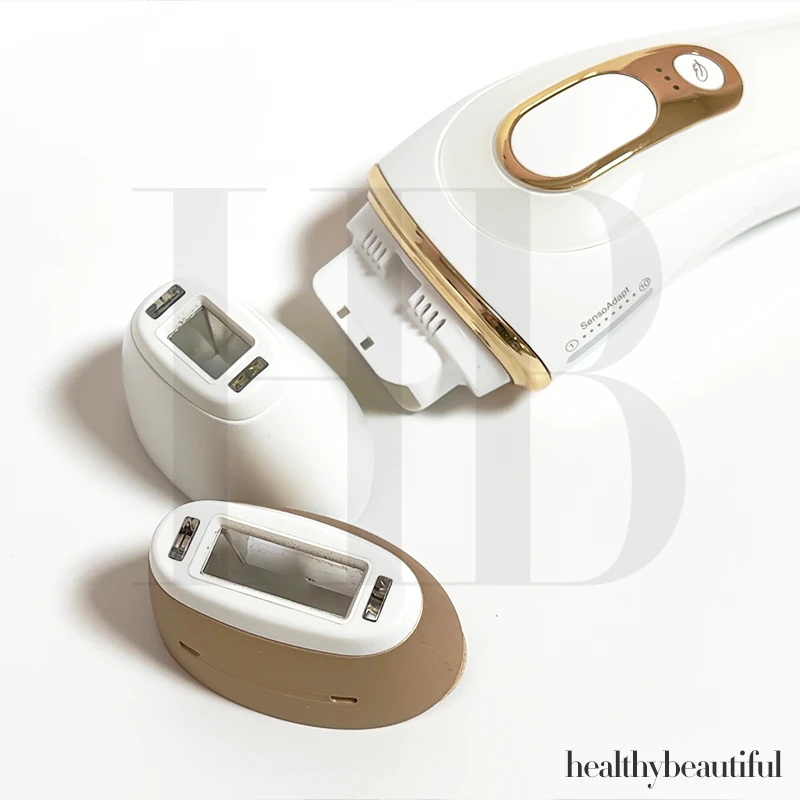
ViQure EpiPro vs. Braun Silk-Expert Pro: The Esthetician's Guide
Diode vs. IPL
The Braun Silk-Expert Pro 5 is one of the most user-friendly devices for beginners.
Reviews: Short-term & Long-term Results, Before & After
ViQure EpiPro Laser: Before and After
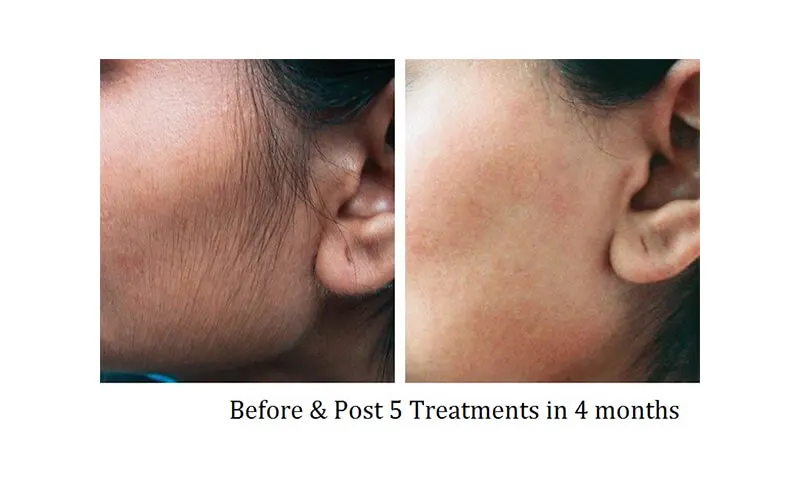
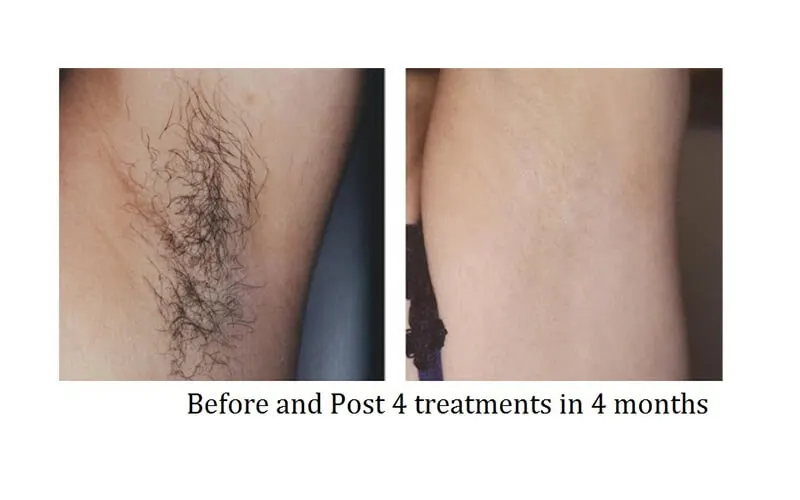
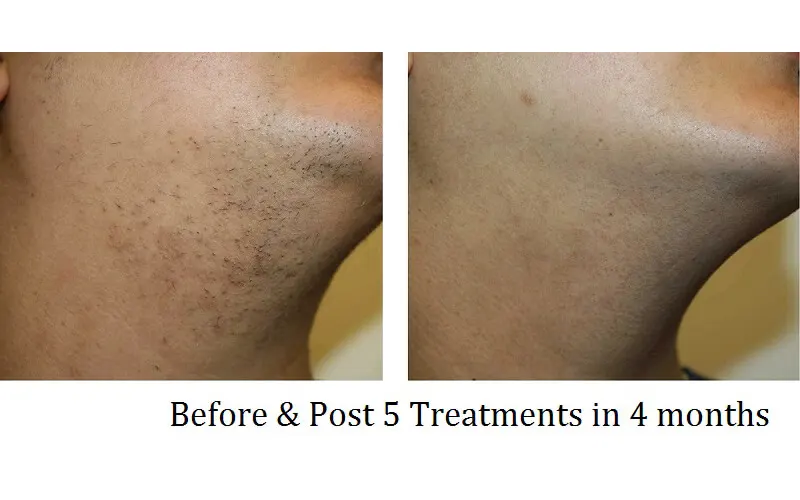
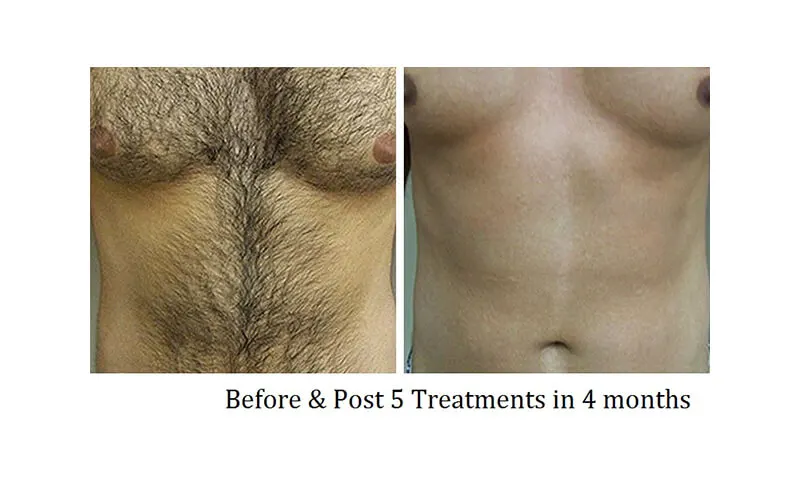
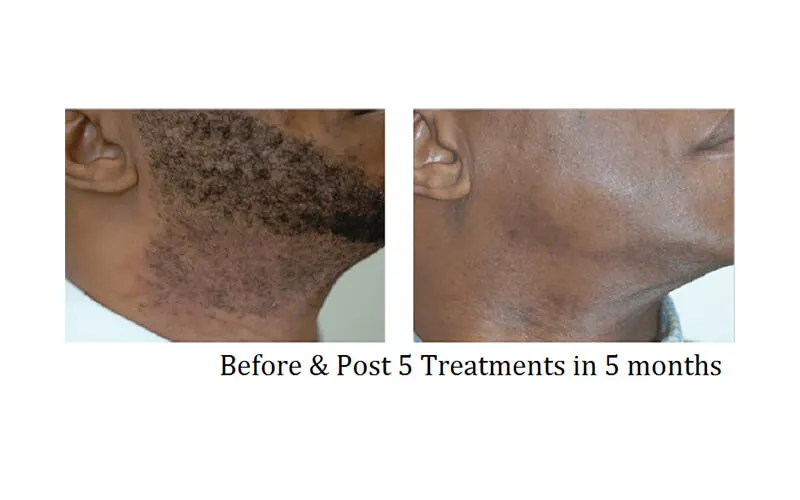
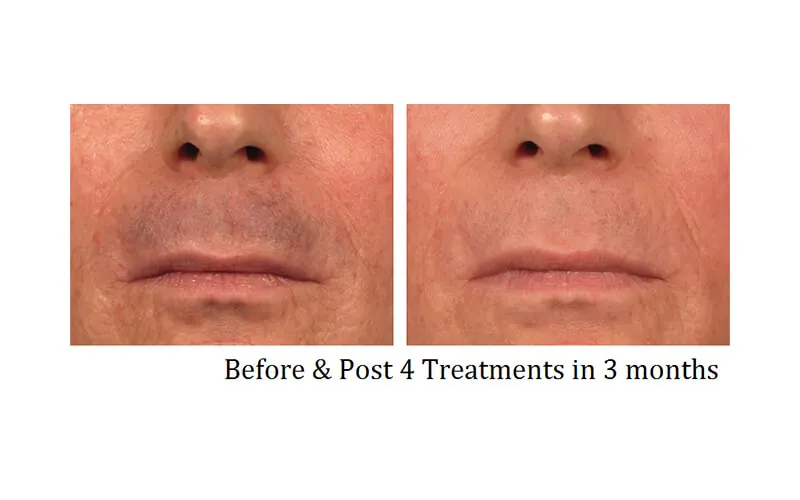
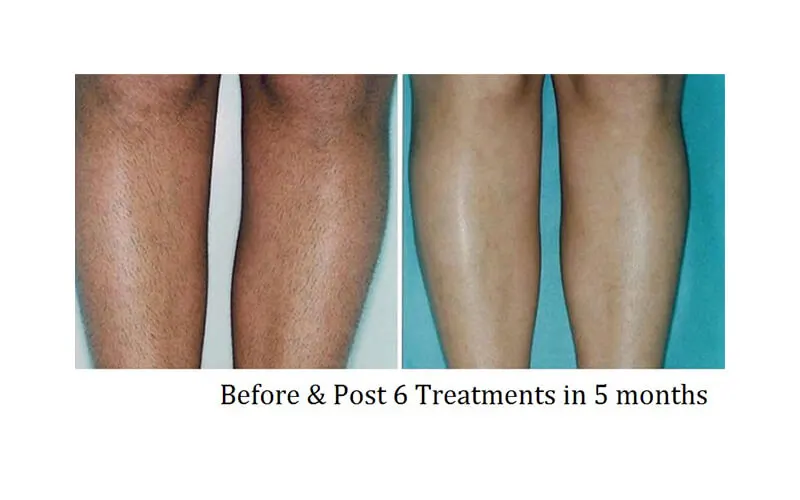
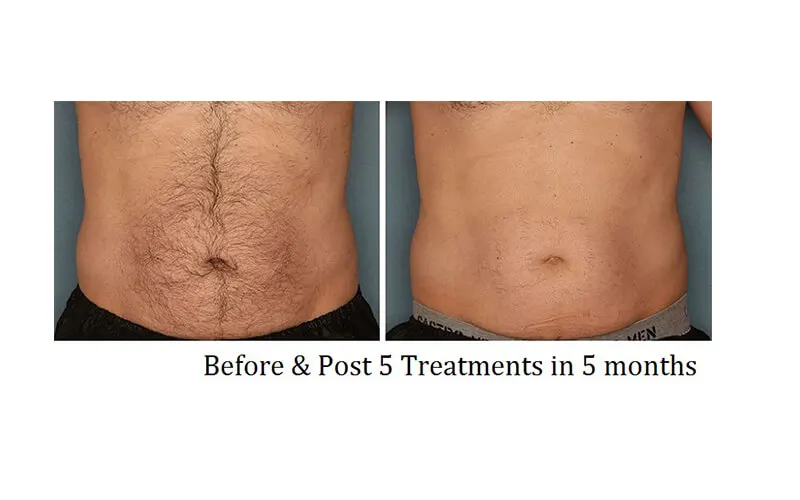
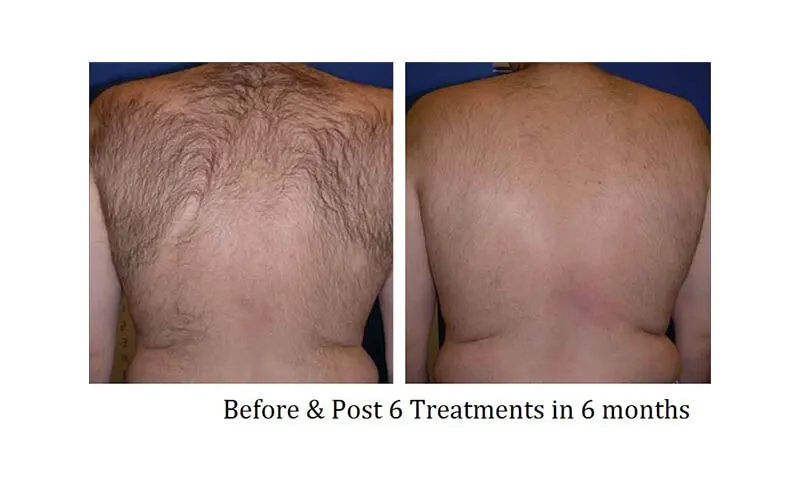

The above before and after study provides evidence of effective and long-term hair removal using the diode laser with appropriate laser parameters such as spot size, fluence, and pulse duration.
Expected Results:
Compared to IPL devices, the ViQure Laser shows more efficient and effective short-term and long-term results.
Expected Short-term Results:
- Depending on your sensitivity and pain tolerance, you can feel minimal discomfort during and immediately after treatment.
- Temporary redness and mild swelling may occur, but these effects subside quickly.
- Hair shedding is a common immediate change observed after treatment.
- Expect regrowth of finer and lighter hair in the treated area, which may initially resemble stubble. With subsequent sessions, regrowth should diminish further.
- Some individuals may experience changes in the sensation of the treated skin, such as feeling smoother or softer.skin
Long-term Effectiveness:
- Reduction in Hair Growth – With consistent use of the ViQure Laser, you should notice a gradual reduction in hair growth in the treated area. Over time, the targeted hair follicles become less active, resulting in thinner, lighter, and sparser regrowth.[21]
- Permanent Hair Reduction – Laser hair removal provides long-lasting results. While it is considered a highly effective method of permanent hair reduction, it's important to note that it may not completely eliminate hair growth in all cases. Some individuals may experience minimal regrowth, which can be managed with occasional maintenance sessions.[10]
- Improved Hair Texture – In addition to reducing hair growth, laser treatment can also improve the texture of regrowing hair. The new hair tends to be finer and softer, making it less noticeable and more manageable.
- Fewer Maintenance Sessions – Compared to IPL and traditional hair removal methods
- Studies have shown long-term hair reduction and minimal side effects with diode lasers, supporting the effectiveness of the ViQure EpiPro.
- Skin Rejuvenation – Improved texture, skin tone, and acne
Keep in mind that these may vary from person to person as individual factors such as hair and skin type, hormonal influence, and medications may affect the results. The number of treatment sessions and intervals between them can also vary based on the treatment area and hair cycle.
Additionally, the choice of more aggressive parameters for diode laser application may lead to better efficacy but also result in increased discomfort.
All things considered, we can confidently say that the ViQure EpiPro is the best diode laser hair removal machine on the market to date.
Video Reviews
Video: Review for Dark Skin Tones
Product Overview: Our Experience & Honest Review
ViQure EpiPro – 808nm Diode Laser Hair Removal Machine
Video: 808nm diode laser hair removal device for home and salon use
Package Contents: Unboxing the ViQure EpiPro Laser
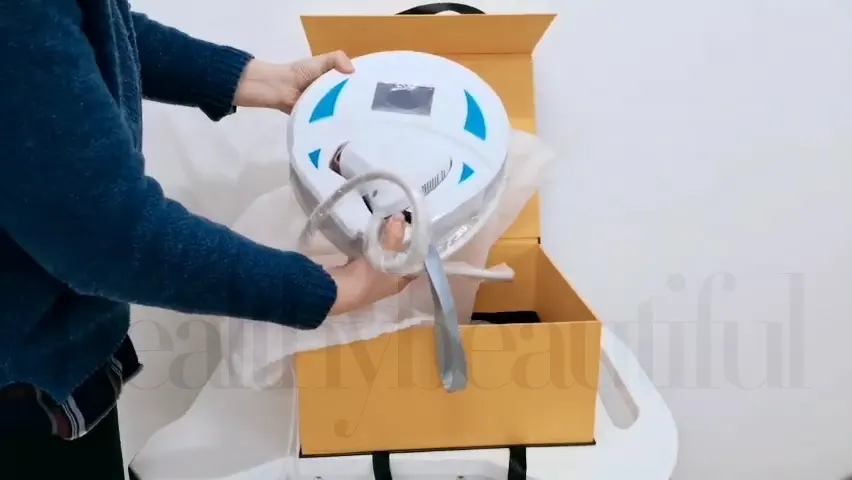
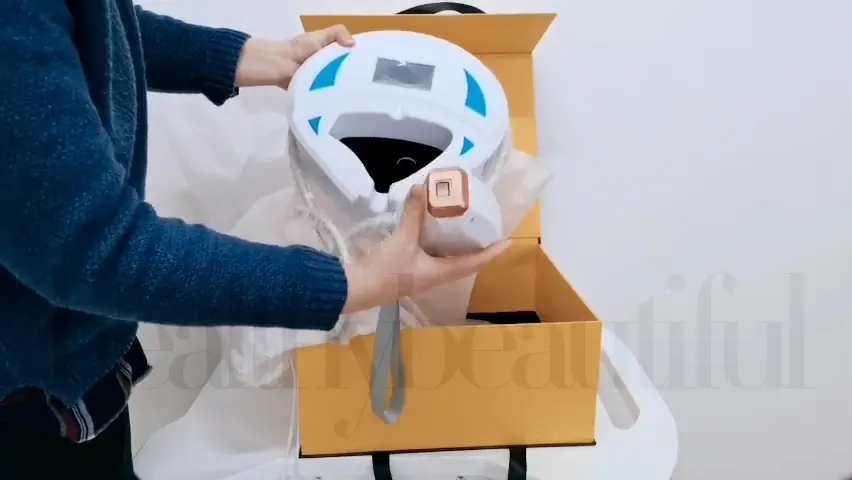
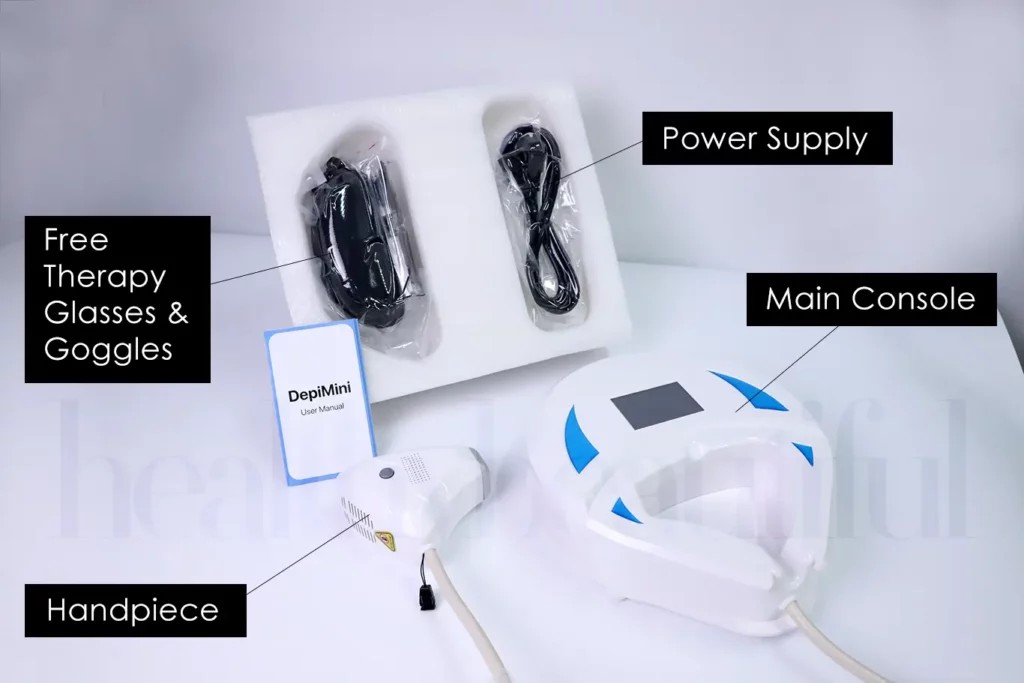
What's Inside the Box?
- Primary Components: A compact console that cradles and connects to the handpiece, Power supply cable
- Accessories: Laser safety glasses (for the operator), Laser safety goggles (for the client), Quick user guide
It is important to note that, similar to many appliances and professional laser machines, it is recommended to allow for a 24-hour rest period after delivery.
This allows certain components to stabilize before initial use. It also ensures the diode laser operates at peak efficiency and reduces the risk of malfunctions or damage in the future.
Product Design & Using the ViQure EpiPro 808nm Diode Laser Hair Removal Machine
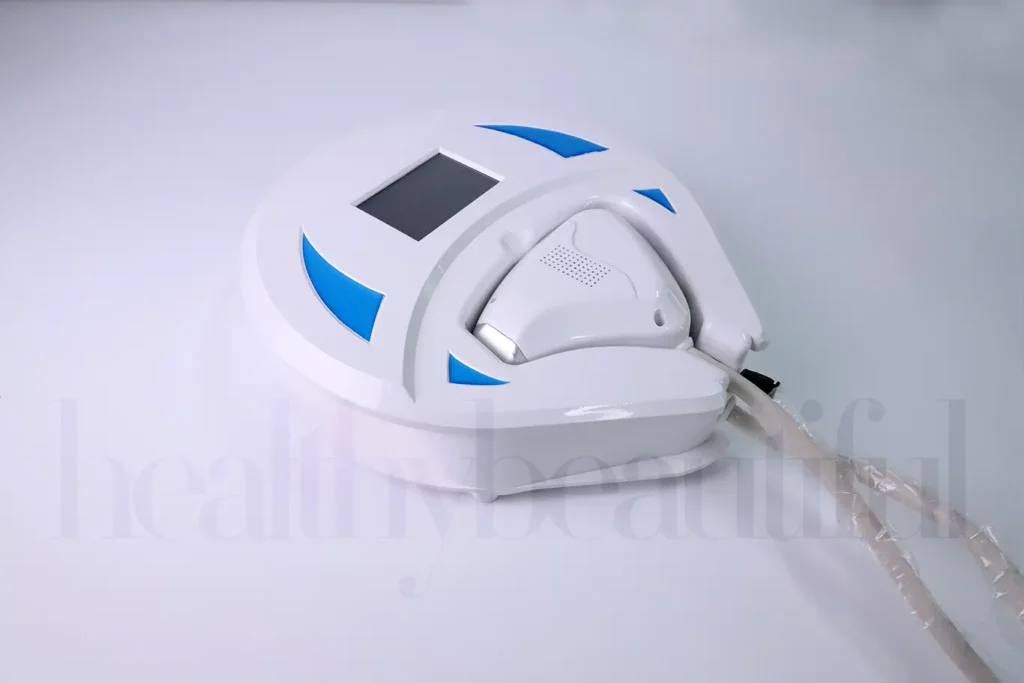
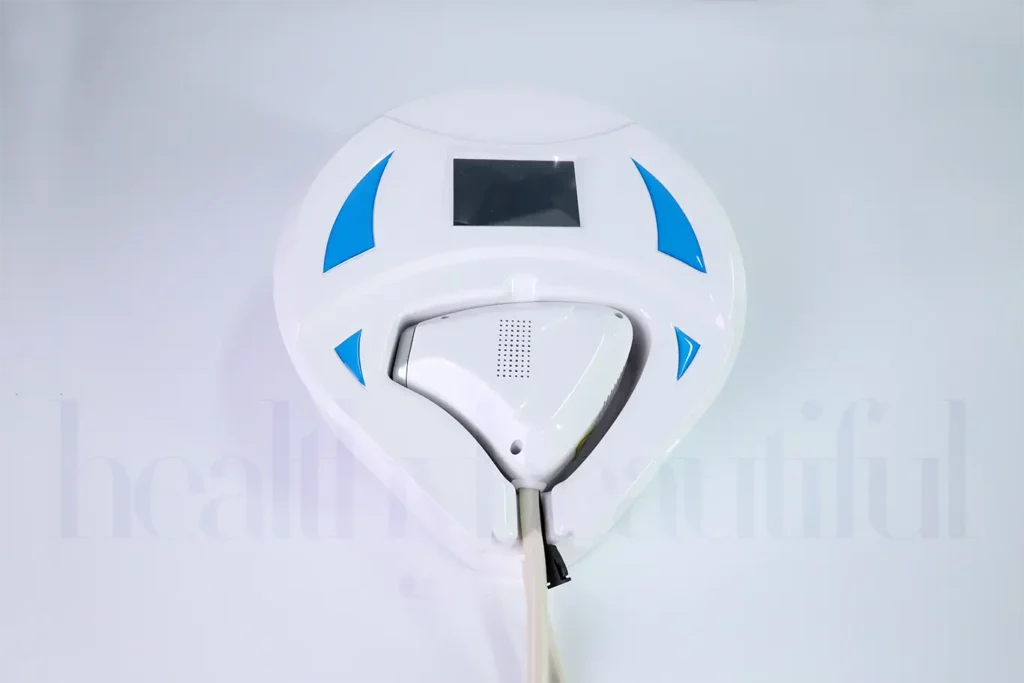
Lightweight & Durable Construction: Medical-Grade Plastic
The ViQure EpiPro looks quite clinical in design, with a white base coat and blue accents.
It's constructed with medical-grade plastic material, which ensures the highest standards of safety and durability.
Medical-grade plastic is biocompatible, non-toxic, and hypoallergenic, minimizing adverse reactions or skin sensitivities.
It's designed to be durable and sturdy while maintaining an easy-to-handle, lightweight and ergonomic design.
It is also resistant to staining, making it easy to clean and maintain.
When compared to alternative materials like metal, medical-grade plastic is corrosion-resistant and non-conductive, ensuring a safe and efficient hair removal experience.
Primary Components
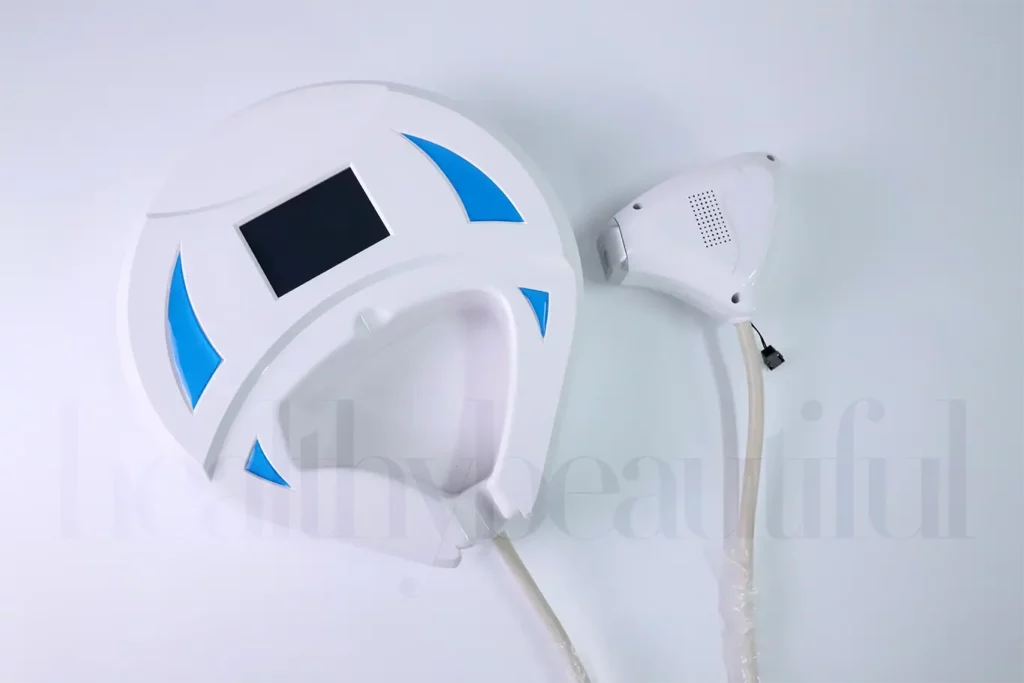
The system consists of a compact console with a built-in cradle to secure the handpiece.
The compact console also has a 3.5″ color touch screen LED that allows easy operation and navigation.
The handpiece contains the laser emitter or diode that generates and emits the laser beam, as well as the contact cooling plate.
They are connected by a long, thick cord measuring approximately 6.56 feet (or 78.74 inches / 2 meters) in length.
The power cable also has considerable length at 4.92 feet (or 59.05 inches / 1.5 meters.
This extended cord length ensures that you can work comfortably, on even the hardest-to-reach areas of your body.
It eliminates the usual problems associated with at-home IPL devices like difficulty positioning, need for extension cables, or accidentally unplugging the device mid-treatment.
Size & Portability
For scale, this is what the ViQure EpiPro looks like compared to a standard commercial laser hair removal machine and a regular IPL device.
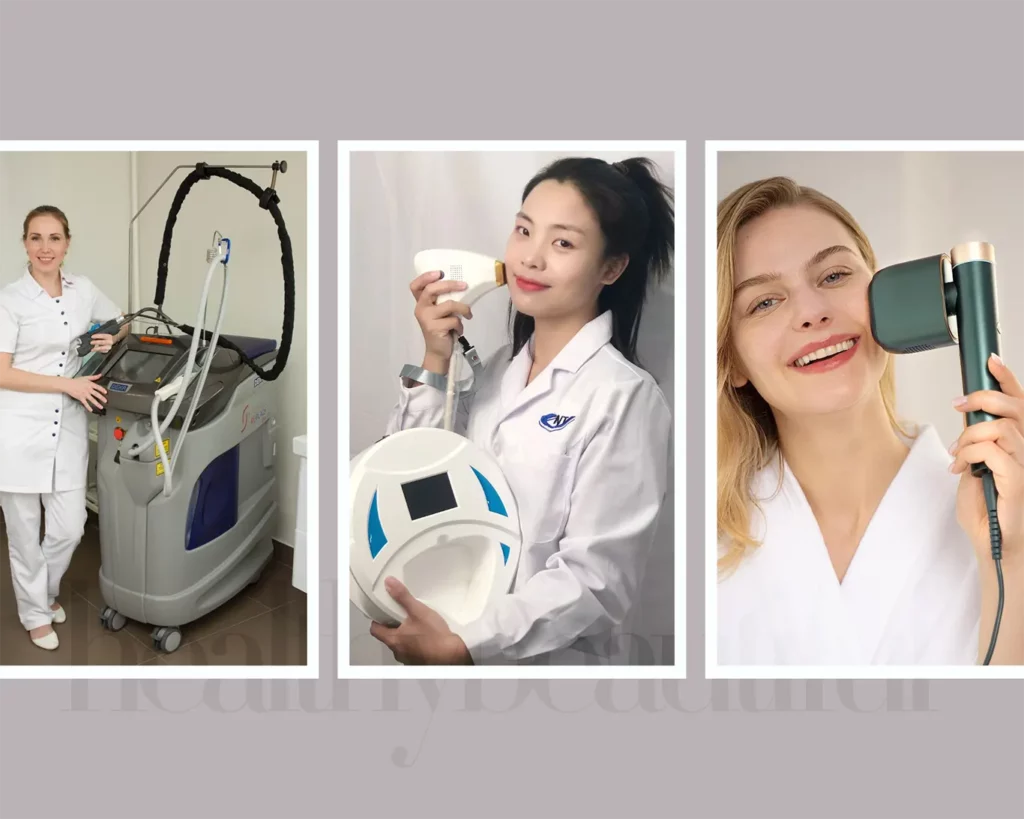
- Commercial machines used in salons and clinics vary in size, but generally are larger and bulkier, weighing around 20-60 pounds (9-27 kg). They often consist of a console unit, a separate handpiece for laser and cooling, and additional components, which make them less portable and more stationary in nature.
- The ViQure Laser has a significantly smaller size and lightweight build at 5.5lbs (2.5kg), making it suitable for both home and salon use. It also offers more portability than larger professional machines.
- IPL devices for home use are the most compact and weigh 1-3 pounds (0.45 to 1.36 kilograms) on average. They are designed to be portable and user-friendly. They often feature an integrated console and handpiece in a single unit, making them more convenient to handle and store.
In terms of size and portability, the ViQure EpiPro appears to be more comparable to a home IPL device than a professional diode laser hair removal machine.
It has the strength of a professional diode machine without the weight of one.
Operations: Using the ViQure EpiPro for Laser Hair Removal & Skin Rejuvenation
Video: How to Use the ViQue EpiPro
Powering the Machine
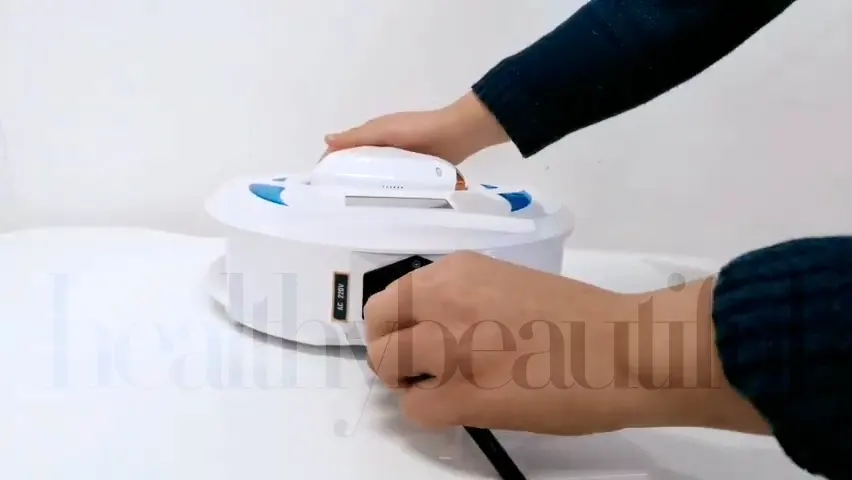

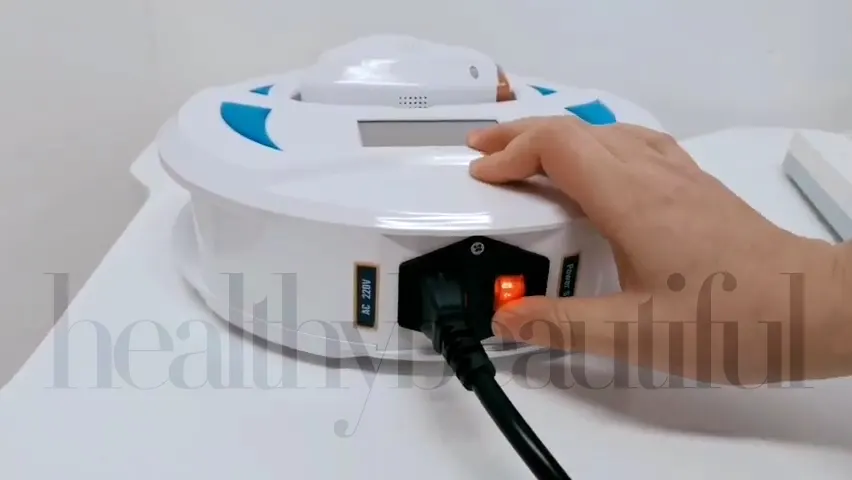
Attach the plugged power cable to the back of the machine and turn on the switch.
The LCD display screen, in turn, lights up.
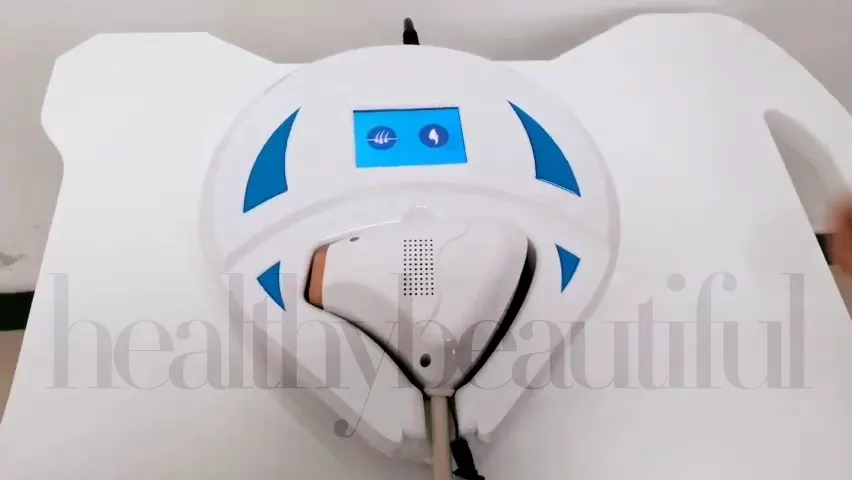
When the system is ready to use, it lets you choose between its two main functions: Hair Removal or Skin Rejuvenation.
3.5-inch LCD Touch Screen: Two Functions, One Solution
The ViQure EpiPro is an outstanding 2-in-1 machine, combining the two services that most people visit aesthetic clinics for:
- Diode Laser Hair Removal – for permanent hair reduction
- Skin Rejuvenation – improves skin tone, tightens skin, and treats acne
We’ll dive into more technical details later.
For now, we’ll walk you through the touch screen and the different visual feedback you’ll see as you navigate the device.


Press the 1st icon for Hair Removal.
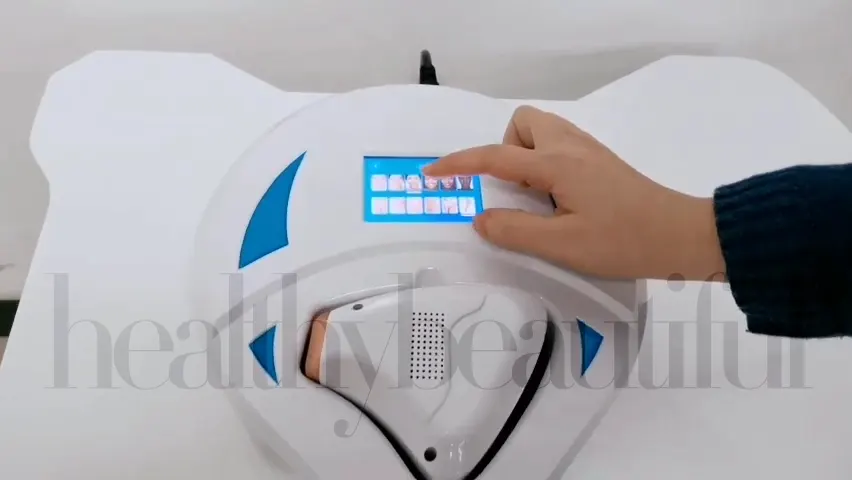
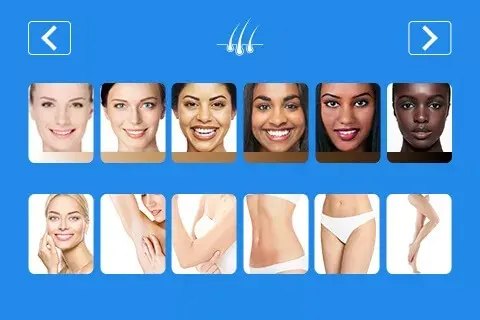
Once you’re in Hair Removal interface, you need to specify:
- Your Skin Tone – according to the standard Fitzpatrick Skin Types I-VI
Jump to: Compatibility Guide - Treatment Area – or the body part you’re looking to treat
Jump to: Treatment Area / Body Area Compatibility
After you’ve entered your selection, you’ll land on the last screen.


There are 4 areas you need to take note of:
- Energy Bars – Levels 1-3, Controls the strength of the laser pulses
Jump to: Energy Fluence - Frequency or Repetition Rate – Levels 1-6, Controls the number of shots per second
Jump to: Frequency/Repetition Rate - Cooling – Turns the cooling system on/off
Jump to: Cooling System - Ready Arrow – Turns on/off, readies the handpiece for use
We'll discuss each of these and what it means for you below, but in the meantime, let’s see how an actual treatment will look like.

Wrist Strap
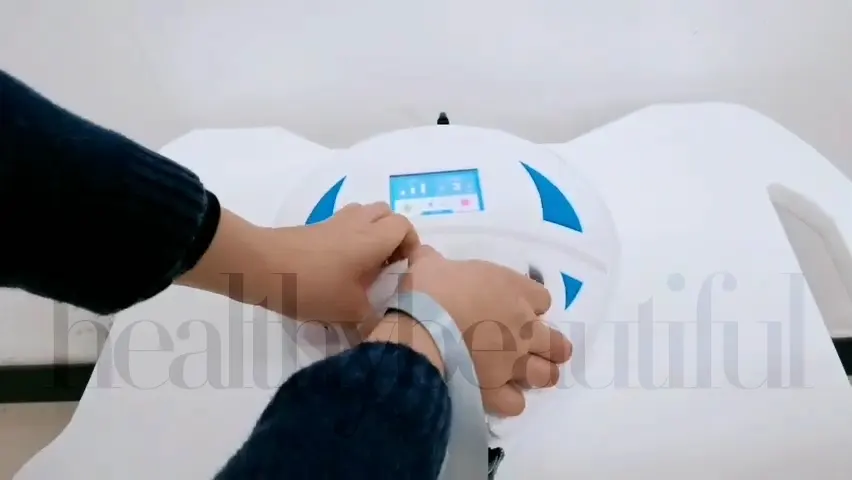
Before picking up the handpiece, make sure to use the attached wrist strap.
Wear this for additional security and to prevent accidental dropping the device.
Handpiece / Treatment Handle

The handpiece is designed with user comfort and ease of use in mind.
Here are its key features:
- Size and Ergonomics – The treatment handle is compact and lightweight, similar to a portable IPL device. Its ergonomically designed shape allows it to fit well with the contours of your body, making it comfortable to hold and maneuver. The trigger position and weight are perfect for handling and maneuvering, even for areas that are a challenge to reach.
- Treatment Window/Laser Emitter – The handpiece contains a laser emitter or diode that generates and discharges the specific wavelength of light (such as 808nm) used for hair removal. This diode produces the laser beam required for the treatment.
- Contact Cooling – The ViQure Laser device incorporates advanced TEC (Thermoelectric Cooling) technology. The sapphire handle head is capable of cooling down to -5°C, while the epidermis temperature during the treatment session drops down in the range of 8°C to 10°C. This cooling system aims to continuously soothe the skin and protect the epidermis from burns.
The ViQure EpiPro device offers a smooth, comfortable hair removal session thanks to its compact, ergonomic design and advanced cooling technology.
Cooling Vents
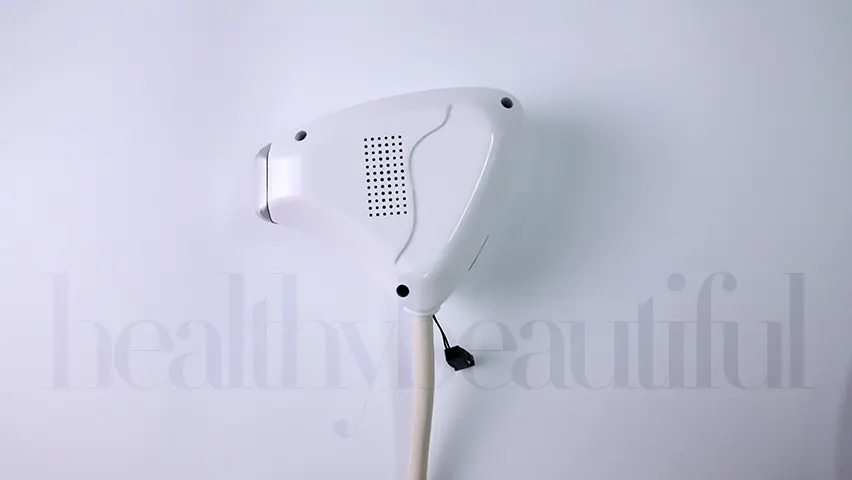
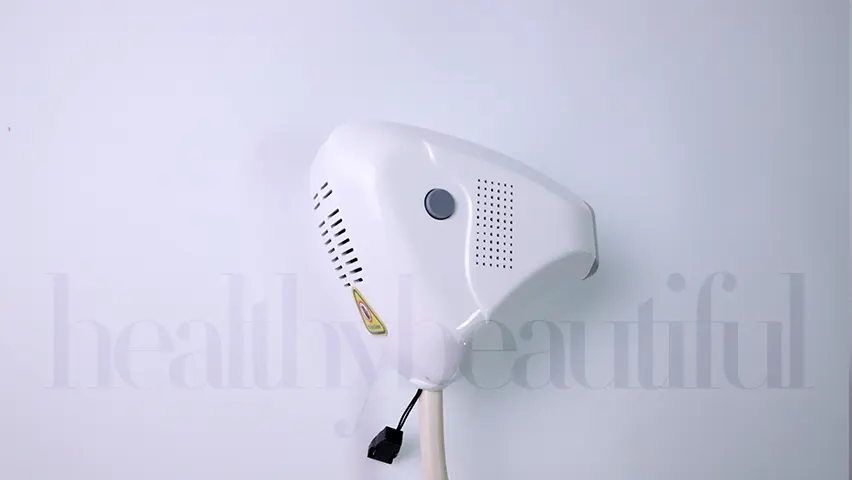
Cooling vents are an essential part of laser hair removal devices, particularly those equipped with cooling systems.
By allowing air circulation, cooling vents dissipate heat generated during operation and maintain an optimal temperature for safe and effective treatment.
The cooling vents on the ViQure EpiPro are located on the sides and back of the device.
During treatment, it's important not to block these vents with your hands to ensure proper airflow.
Additionally, it's worth noting that most IPL devices have similar types of vents, as the bulb and machine tend to accumulate heat with prolonged use.
Most at-home laser hair removal devices are designed to last about 30-40 minutes before becoming too hot to handle or automatically shutting down. This feature prevents overheating and ensures the device operates within safe temperature limits.
When the device is ready to use, you should hear it whir to life, often accompanied by a noise like a hairdryer.
Cooling Gel
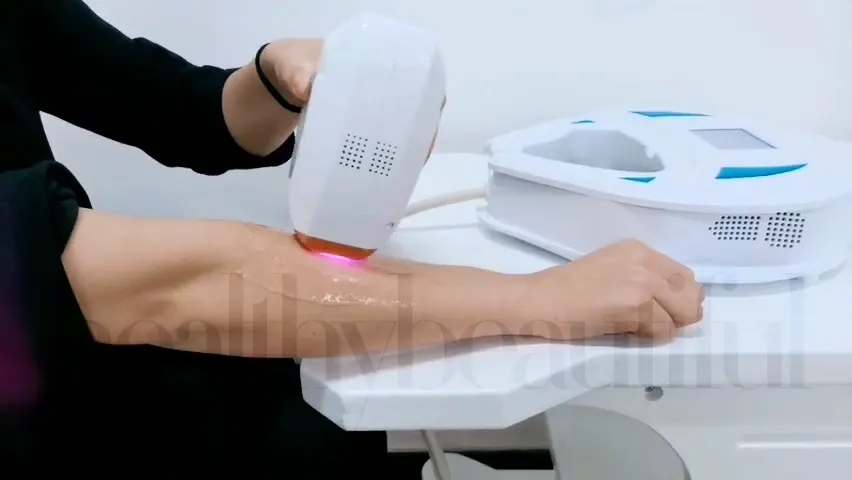
Cooling gel is commonly used in professional laser hair removal to enhance comfort and provide a soothing sensation to the skin.
It helps to lower the skin's surface temperature and provide relief from the heat generated by high-energy lasers. This can make the treatment more tolerable, especially if you have sensitive skin.
Cooling gel is typically applied to the treatment area in a thin, even layer before starting the laser hair removal session.
Video: Professional Laser Hair Removal demo
Cooling gels are used in conjunction with high-energy lasers. So while they are a staple in clinics for patient comfort, they are not necessary for low-fluence IPL devices.
Unfortunately, this is not included in the package and would have to be bought separately. However, cooling gels are affordable and readily available online.
SHR (Super Hair Removal) Technique
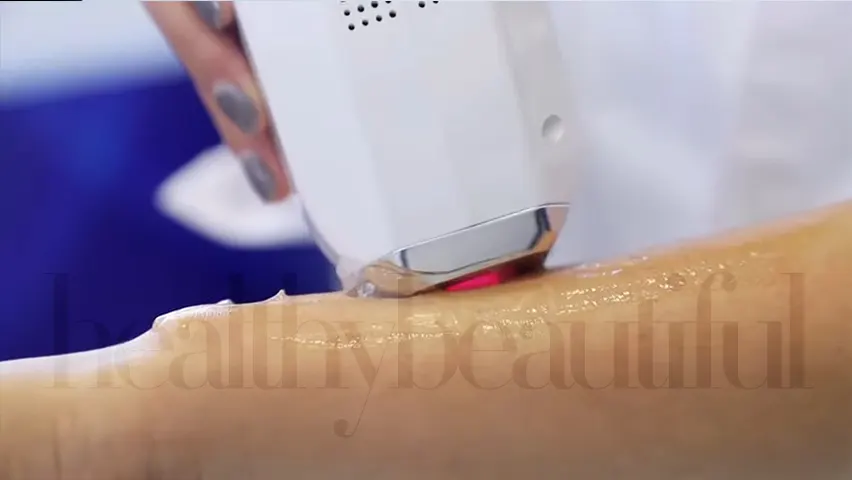
As an overview, laser hair removal uses two different pulse techniques:
- HR (Hair Removal) technique – Used by IPL devices and very high-energy laser machines. It's a stamping technique where you move slowly across your skin and flash in a grid-like pattern. After each pulse, you lift and reposition the device to stamp the next area, repeating the process until the entire treatment area is covered.
- SHR (Super Hair Removal) technique – SHR mode, on the other hand, utilizes a continuous sweeping motion to gradually heat the skin. This results in a more comfortable treatment experience and is designed to treat larger areas much quicker.[27]
We'll cover the differences in more detail below, but for now, know that the ViQure Laser uses the SHR technique.
After applying the cooling gels, proceed with the treatment as follows:
- Position the Handpiece – Hold the device handpiece securely and position it perpendicular to the treatment area, ensuring proper contact with the skin.
- Glide Repeatedly over the Treatment Area – Press the trigger button and hold. Using the SHR technique, the device will emit a continuous series of light pulses as you glide it over the treatment area. The handpiece should move smoothly and steadily, without stopping or stamping motions.
- Overlap the Passes – As you move the handpiece, overlap each pass slightly to ensure comprehensive coverage of the treatment area. This targets all hair follicles effectively. Continue gliding for 3-5 minutes.
- Maintain Speed and Consistency – Maintain a consistent speed as you glide the handpiece over the skin. The device should continuously flash and emit light pulses throughout the treatment session.
- Repeat for Different Areas – If treating multiple areas, repeat the same process for each area, applying cooling gel as necessary and ensuring proper coverage with overlapping passes.
- Aftercare – Wipe the cooling gel off. Apply a post-laser cream or cold compress to the treated area to soothe your skin. Avoid direct sunlight and use a sunscreen with an SPF 30 or higher to protect the skin. Keep the area clean and moisturized to ensure healing.
- Follow the Recommended Treatment Schedule – Use once a month for the first 3-6 months, or until you see permanent results.
Jump to: Treatment Plan & Frequency
Ease of Use
Once you’re familiar with its parts and operations, the entire process is very easy and straightforward.
The ViQure Laser is designed with user-friendly features that ensure ease of use in both home and salon settings.
The device also offers intuitive controls and settings, making it easy to operate even for beginners. You can readily adjust the power levels and treatment modes according to your preferences.
There are nuances to adjusting advanced parameters like frequency and power. However, this is something you can learn if you’d like to maximize your device.
Most IPL devices promise similar results to professional laser, but this is your chance to use a machine actually used in a salon.
When used for personal use, the advantages the ViQure EpiPro will give you are, bar none, the most you'll ever get out of an at-home laser hair removal device.
Quality, Durability, & Lifespan
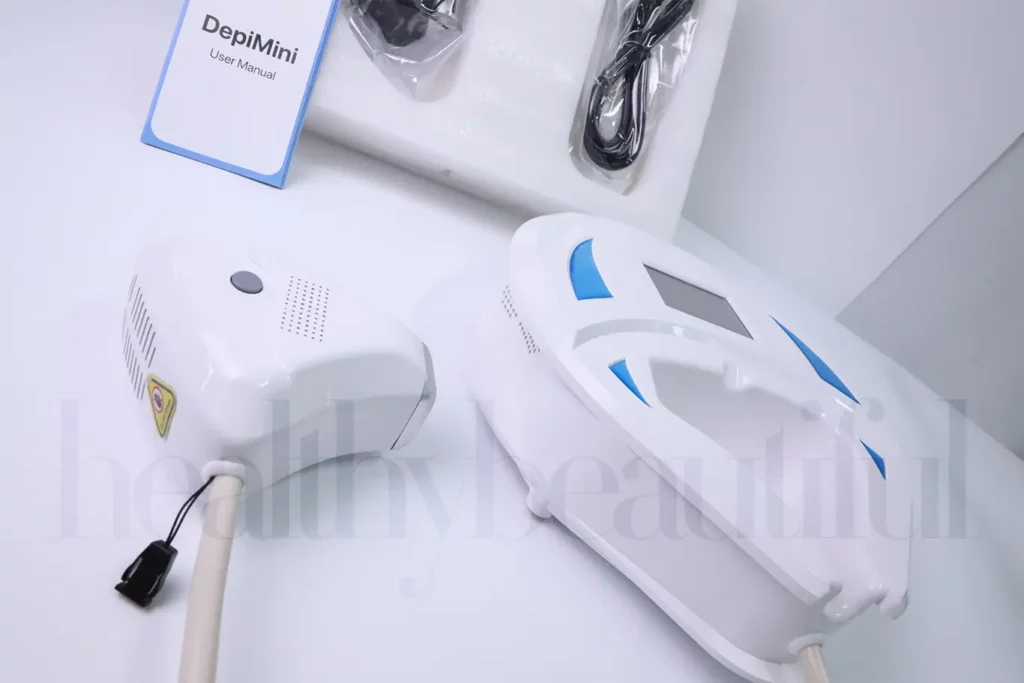
Professional-Grade Construction Extended for Home Use
In terms of build and quality, it's almost unfair to compare a professional machine to a standard IPL device.
There are well-built home devices out there, but professional machines often feature robust construction, a high-quality build, and durability.
They can withstand heavy and frequent use in salon settings, ensuring longevity and reliability.
ViQure also specializes in medical grade products as a brand.
Highest Number of Flashes in an At-Home Device: Quartz Lamps vs. Semiconductor Laser
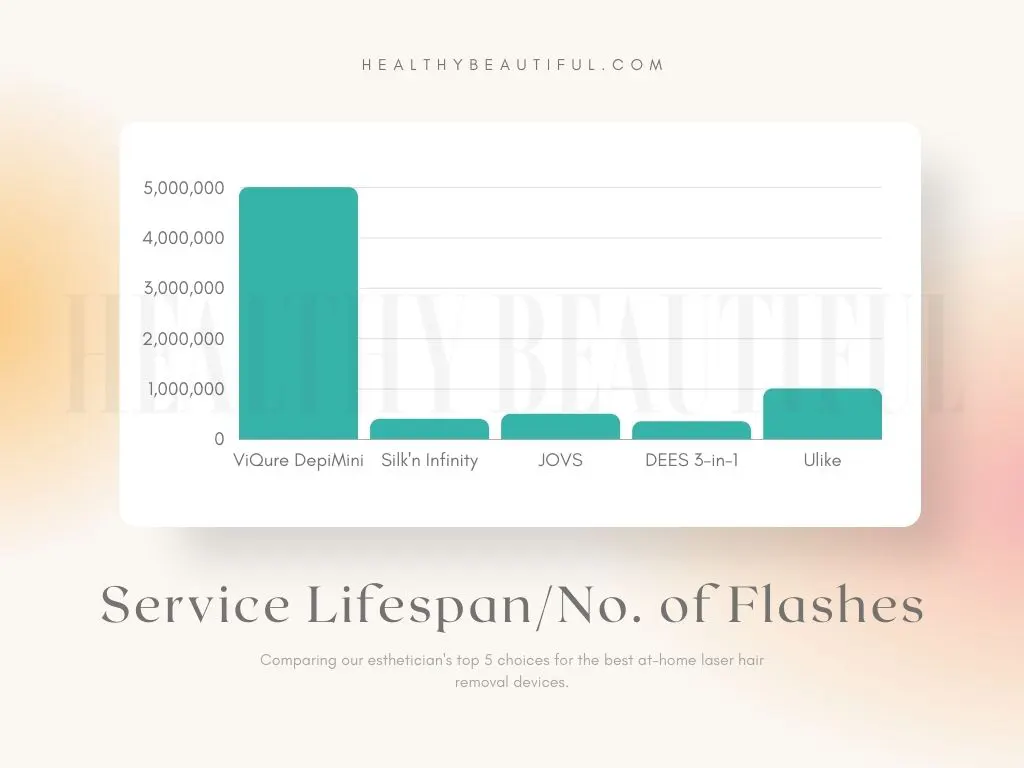
| Laser Hair Removal Device: | Lifespan/No. of Flashes: |
|---|---|
| ViQure EpiPro | 5,000,000 |
| Silk'n Infinity | 400,000 |
| JOVS Venus Pro | 500,000 |
| DEES 3-in-1 Permanent Hair Removal System | 350,000 |
| Ulike Sapphire Air+ | 1,000,000 |
Keep in mind that the ideal lifespan of IPL devices can be measured by their total number of shots or flashes.
For IPL devices, this depends largely on the quality and durability of the quartz lamp used.
Laser machines are constructed differently.
The ViQure EpiPro can provide you with up to 5,000,000 shots.
This is the highest we've ever seen in an at-home laser hair removal device.
Instead of quartz lamps, this at home diode laser uses a semiconductor laser powered by Coherent.
Coherent Labs is one of the world's leading providers of laser-based technology for scientific, commercial and industrial customers.
The closest among the 35 devices we've reviewed is the JOVS Venus Pro at 500,000 IPL flashes and Ulike Sapphire Air+ at 1 Million IPL flashes.
Tria 4x, the only other diode laser we’ve seen on the home device market, only has 90,000 pulses built-in.
That said, the ViQure EpiPro does have a different mechanism for flashing than other devices.
Frequency of Flashes Used
Most devices use the single-pass HR technique, while the ViQure EpiPro uses the multiple-passes SHR technique.
This means you will likely use more flashes in a single treatment on this compared to an IPL device.
On the other hand, the frequency of treatments also comes into play.
Most IPL devices require 1x-3x weekly treatments while the ViQure EpiPro only requires treatments once a month.
This is the same schedule you'll keep if you go to a professional salon.
Jump to: Treatment Plan & Frequency
Warranty
With over 5 million pulses however, you'll definitely see results sooner than it can run out.
Most IPL devices have a 1 to 2 year replacement warranty.
ViQure.com offers a 1-year repair warranty and 30-Day Money Back Guarantee.
Following the manufacturer's guidelines for general care and maintenance, you can maximize your device's lifespan and deliver consistent results over an extended period.
Product Technology
Diode Laser
Diode laser is one of only four types of laser used by physicians for in-clinic laser hair removal treatments.
Commonly used lasers and light sources used for epilation include the ruby laser (694 nm), the alexandrite laser (755 nm), the diode laser systems (810 nm), the long-pulsed Nd: YAG laser (1064 nm), as well as the intense pulsed light (IPL) source and variants of the IPL.[3, 14, 23]
According to peer-reviewed literature, diode laser systems have been found to be highly effective for hair removal compared to other methods. Data also suggests that diode laser hair removal yields excellent long-term results and is associated with high patient satisfaction rates.[13, 28]
Some results sustain not only for 3 or 6 months but also for 1 year after last treatment.[24]
The long‐pulse 810nm diode laser, in particular, is the most popular choice due to their deep penetration and suitability for a wide range of skin tones. The precision and specificity of the diode laser ensure efficient and targeted hair removal, minimizing damage to the surrounding skin.[5, 9]
Due to advancements in technology, what was once only found in clinics and medspas is now available for home use through devices like the ViQure EpiPro.
Diode laser have now been miniaturized and optimized for safe and effective home use.

The main mechanism behind its efficacy is selective photothermolysis.[1]
Diode laser emits a specific wavelength of light which is highly absorbed by the melanin pigment present in hair follicles. This absorbed energy is converted into heat, which damages the hair follicle and disrupts its ability to regrow hair. The laser heat effectively destroys the hair follicle while minimizing damage to the surrounding skin and tissue.
The diode laser technology used in the ViQure EpiPro offers several advantages over other lasers and IPL (Intense Pulsed Light) devices for hair removal:
- Precision – Diode lasers emit a specific wavelength of light, allowing precise melanin targeting in the hair follicles. This precision minimizes damage to the surrounding skin, making it safer and more effective.
- Efficiency – Diode lasers have a larger spot size compared to other lasers, enabling faster treatment sessions. This means that larger areas can be covered in less time, making it more time-efficient.[7]
- Versatility – Diode lasers are effective for a wide range of skin types and hair colors. They can selectively target melanin without harming the surrounding skin, making them suitable for a diverse range of individuals.
- Long-lasting results – Diode lasers provide long-lasting hair reduction by damaging the hair follicles, inhibiting future hair growth. This leads to significantly reduced hair regrowth over time.
- Safety – Diode lasers have built-in safety mechanisms to protect the skin, such as integrated cooling systems and precise energy control. This reduces the risk of adverse effects and ensures a comfortable treatment experience.
- Clinically proven – Diode lasers have been extensively studied and used in professional settings for hair removal treatments, demonstrating their efficacy and safety.
By harnessing diode laser technology, the ViQure EpiPro offers an advanced and effective solution for at-home hair removal. This bridges the gap between professional salon treatments and convenience.
While diode laser hair removal offers several benefits, it's important to consider some potential drawbacks as well.
Here are a few cons of diode laser hair removal:
- Limited Effectiveness on Very Light or Fine Hair – Diode lasers work best on dark, coarse hair as the laser targets the pigment (melanin) in the hair follicles. Very light-colored or fine hair may not respond as effectively to diode laser treatment, resulting in less noticeable results.
- Potential for Skin Sensitivity – Some individuals may experience temporary skin redness, swelling, or discomfort during or after diode laser treatment. This is typically mild and subsides within a few hours to a couple of days. However, people with sensitive skin or certain skin conditions may be more prone to these side effects.
- Cost – While diode laser at home offer cost savings compared to professional treatments, they still represent a significant investment. The upfront cost of the device itself, as well as the need for cooling gels, should be considered.
Note that the effectiveness and potential side effects of diode laser hair removal can vary depending on individual factors such as skin type, hair color, and response to treatment.[17, 20, 25]
Diode vs. IPL
The ViQure EpiPro distinguishes itself from most at-home devices by utilizing a diode laser instead of IPL (Intense Pulsed Light) technology. Unlike IPL devices that emit a broad spectrum of light, the diode laser emits a focused, single wavelength of light.[2]

When comparing diode laser and IPL (Intense Pulsed Light) hair removal methods, there are several factors to consider:
- Precision Targeting – Diode laser offers precise targeting of hair follicles, while IPL has a broader light spectrum that may not target hair follicles as effectively.
- Skin Tone Suitability – Diode laser is generally considered safer and more effective for individuals with darker skin tones, whereas IPL may have limitations and potential risks for darker skin types.
- Long-Term Results – Diode laser treatments have shown promising long-term hair reduction, while IPL may require more frequent maintenance sessions to maintain results.
- Treatment Speed – Diode laser treatments cover larger areas quickly due to larger spot sizes, while IPL may require more time for larger treatment areas.
- Discomfort Level – Diode lasers often incorporate cooling mechanisms, resulting in a more comfortable treatment experience, while IPL treatments may cause more discomfort or sensations similar to a rubber band snapping on the skin.
- Cost – Diode laser treatments are generally more expensive than IPL treatments, as diode lasers are considered professional-grade devices, while IPL devices are more affordable and accessible for home use.
As with any treatment, the effectiveness and suitability will vary depending on factors such as skin type, hair color, and response.[20]
Key Parameters
Published studies have identified five key measurement parameters for laser output:
- Energy Measurement (fluence) – The amount of energy delivered per unit area of tissue. It is a crucial parameter for determining the effectiveness and safety of laser treatments.
- Spot Size – Refers to the spatial distribution of the laser beam on the tissue. It determines the size of the treatment area and influences the depth of penetration and precision of the laser treatment.
- Wavelength – Indicates the laser's specific spectral output. Different wavelengths are absorbed by different chromophores in the skin. This allows for targeted treatment of specific concerns such as hair removal, pigmentation, or vascular lesions.
- Frequency or Repetition Rate – Indicates the number of laser pulses delivered per second. It affects the speed of the treatment and the total energy delivered over a given time, impacting treatment efficacy and patient comfort.
- Pulse Duration – Refers to the exposure time of the laser pulse on the tissue. It determines the depth of penetration and thermal effect on the target area.
These measurement parameters collectively provide essential information for assessing and comparing the performance and effectiveness of laser devices across different applications in clinical settings.
The appropriate selection ensures optimal destruction of the hair follicle without collateral damage to the surrounding skin.
The use of high-quality lasers with variable wavelengths, pulse durations, frequencies, and fluences can enable you to achieve far superior results irrespective of hair color, skin color, hair thickness or follicle depth.
Previously, expert hair removal procedures required a highly skilled laser operator who could safely adjust various laser parameters.
However, devices like the ViQure EpiPro have revolutionized this process due to their user-friendly design, eliminating the need for professional training to operate them safely and effectively.
Energy Fluence (Laser Power)
Energy fluence is widely recognized as the most crucial factor in laser hair removal, as it directly influences treatment outcomes.
In clinical practice, the primary objective is to achieve maximum results while minimizing postoperative side effects. To accomplish this, several key factors need to be carefully considered when selecting the appropriate energy density for a client.
The goal of laser hair removal is to deliver sufficient energy to the targeted chromophore (typically melanin in the hair follicle) to cause thermal damage, leading to the destruction of hair follicles.[9]
However, it is vital to strike a delicate balance, as excessively high energy can result in adverse effects such as burns, blisters, or hyperpigmentation, while insufficient energy may lead to inadequate treatment outcomes and user dissatisfaction.
When determining the optimal energy fluence for a client, several factors come into play. Skin type, hair color, and thickness are essential considerations.
Darker skin types have higher melanin content, making them more prone to absorbing laser energy and increasing the risk of adverse effects. In contrast, lighter hair colors or finer hair may require higher energy fluence to effectively target the hair follicles.
Furthermore, energy density selection should also account for individual sensitivity and tolerance to laser treatment. Gradually increasing the energy levels based on the client's response and adhering to recommended safety guidelines can help achieve the desired results while minimizing the risk of side effects.
Clinicians assess these factors to tailor treatment parameters, including energy fluence, to each client's specific needs. This individualized approach ensures optimal efficacy and safety throughout the laser hair removal process.
However, with the ViQure EpiPro, these considerations are made easy for diode hair removal at home. The device provides a user-friendly experience by allowing individuals to select their skin color and body part. Based on this information, the device intelligently determines the ideal energy fluence for optimal results, taking the guesswork out of the equation.

| Skin Type I | Skin Type II | Skin Type III | Skin Type IV | Skin Type V | Skin Type VI | |
|---|---|---|---|---|---|---|
| Level 1/ 1Hz | 13.3/J | 12/J | 11/J | 9.9/J | 8.7/J | 7.8/J |
| Level 2/ 1Hz | 14.4/J | 13.3/J | 12.2/J | 11.1/J | 8.8/J | 8.8/J |
| Level 3/ 1Hz | 15.7/J | 14.4/J | 13.6/J | 12.3/J | 9.6/J | 9.6/J |
Furthermore, the ViQure Laser offers adjustable intensity levels, allowing users to customize their treatment experience. With options ranging from gentle to medium and strong (1-3 intensity), individuals have the flexibility to increase the intensity as desired or based on their specific needs.
By combining these features, the ViQure EpiPro empowers home users to safely and effectively perform laser hair removal treatments. The device takes into account individual characteristics and provides the ideal energy fluence.
Spot Size
Spot size also plays a crucial role in laser hair removal and has a significant impact on treatment outcomes.[29]
The ViQure EpiPro stands out with its large spot size of 12 mm x 14 mm.
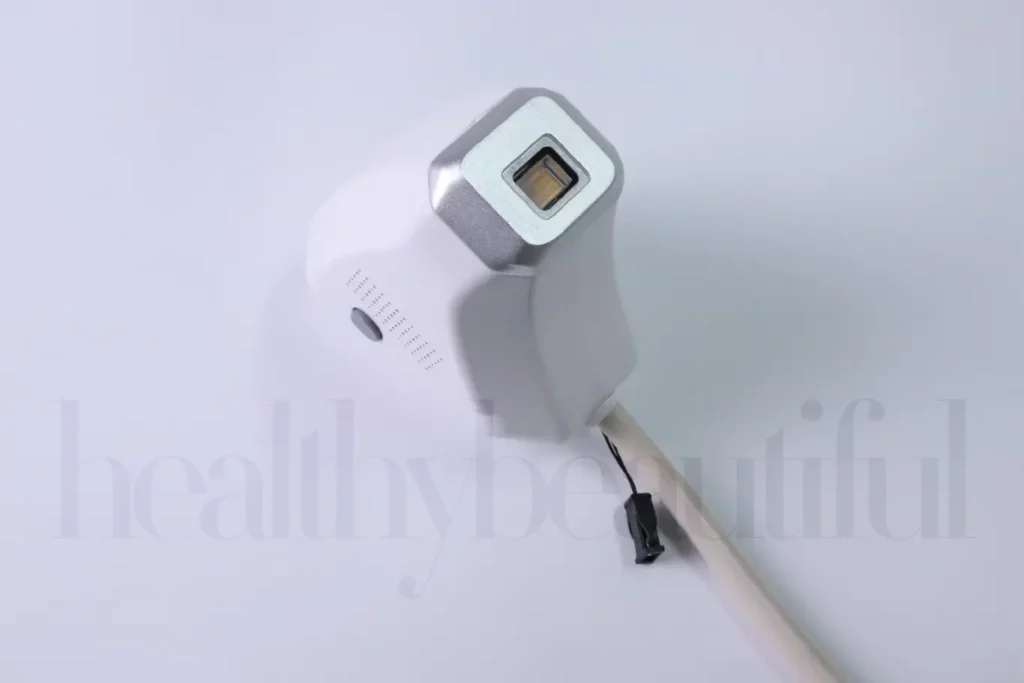
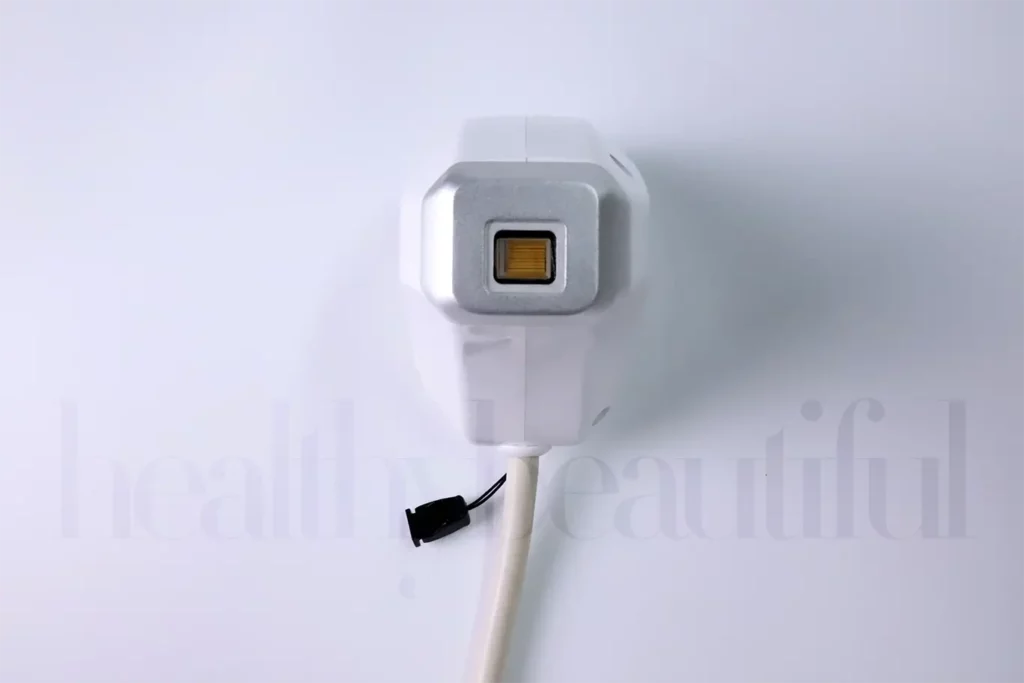
A larger spot size allows for deeper light penetration into the skin, as it experiences less scattering.
This deeper penetration enhances the treatment's effectiveness, especially for targeting hair follicles located at greater depths.[19]
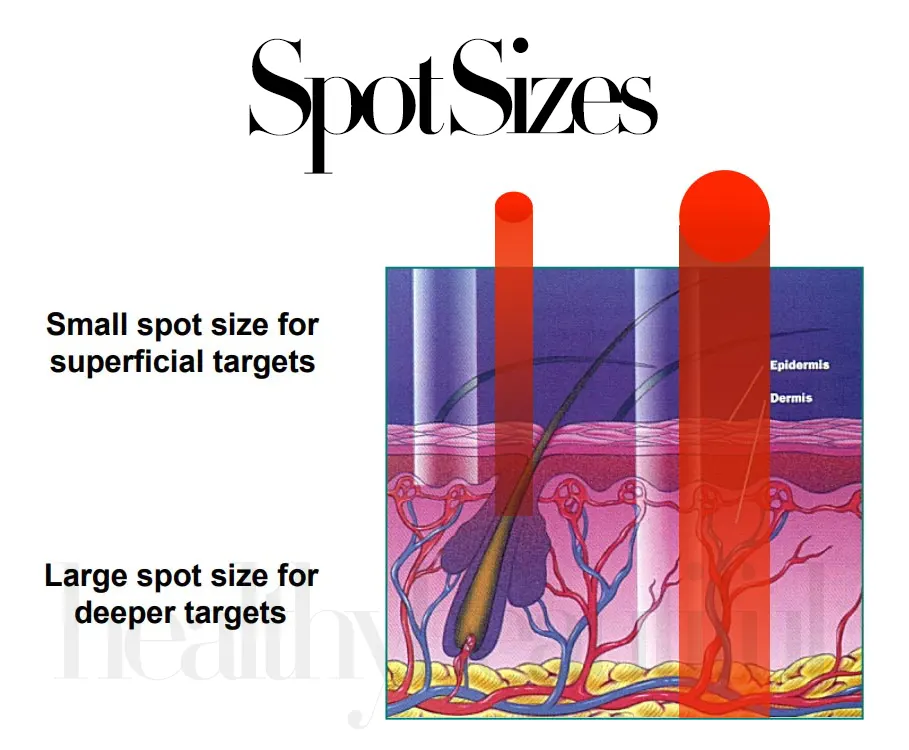
Image: Littler showed that the optical transmittance of tissue is nearly doubled when increasing the spot size from 5 to 12 mm. Since the depth of follicles is up to 4mm, a large spot size might improve the therapeutic outcome of the laser-assisted hair removal. Ort and Anderson suggested an optimal spot size of 10 mm or larger, regardless of which laser is used. This is mainly due to an increased penetration depth caused by the larger spot size.
Additionally, larger spot sizes offer faster treatments. With a larger spot size, large surface areas are covered quicker, reducing overall treatment time. This increases efficiency and enhances the user experience.
In practical terms, smaller spot sizes are most effective for treating smaller superficial hair follicles, while larger spot sizes are ideal for reaching deeper targets.
The ViQure Laser‘s large spot size enables deeper penetration, faster treatments, and improved outcomes across various body areas and hair types.
Laser Wavelength
The 808nm diode laser used in the ViQure EpiPro stands out compared to other lasers commonly used in hair removal treatments.

Image: A cross-section showing different wavelengths of light penetrating dermal tissue.
| Wavelength | Integrated Function | Clinical Advantage | Disadvantage |
|---|---|---|---|
| 755nm | Alexandrite Laser | Best on light skin, fine hair | Shallow depth of penetration, High risk for darker skin |
| 808nm | Diode Laser | Best on all skin types and hair colors | Less effective on lighter, finer hair |
| 1064nm | Nd:YAG Laser | Best for darker skin | Affinity for hemoglobin/blood vessels |
Compared to Alexandrite lasers, which operate at 755nm, the 808nm diode laser offers deeper penetration into the skin. This allows for effective treatment of a wider range of skin types and hair colors, including darker skin tones, where the risk of adverse effects is higher with Alexandrite lasers.[6]
In contrast to Nd:YAG lasers, which typically operate at 1064nm, the 808nm diode laser specifically targets melanin in the hair follicles, making it more efficient and precise for hair removal. Nd:YAG lasers have a higher affinity for hemoglobin, making them better suited to vascular treatments than hair removal.[5, 8]
When compared to IPL (Intense Pulsed Light) devices, the 808nm diode laser offers superior precision and selectivity. IPL devices emit a broad spectrum of wavelengths, making them less specific to targeting hair follicles and potentially affecting surrounding tissues. The focused wavelength of the 808nm diode laser ensures optimal absorption by hair follicles, resulting in efficient hair removal with minimal damage to the surrounding skin.
The 808nm diode laser used in the ViQure EpiPro provides a favorable balance of effectiveness, safety, and versatility compared to other lasers and IPL devices. Its specific wavelength, deep penetration, and precise targeting make it a reliable choice for long-lasting hair removal results in the comfort of your own home.
Frequency/Repetition Rate
The frequency or repetition rate refers to the number of laser pulses delivered per unit of time, usually measured in hertz (Hz). The choice of frequency plays a significant role in achieving optimal results and enhancing the overall efficacy of the treatment.
Higher repetition rates, such as the ones offered by the ViQure EpiPro, allow for faster treatment sessions, as they deliver a greater number of laser pulses in a shorter amount of time. This is particularly beneficial when targeting larger treatment areas, as it covers more surface area efficiently.
Moreover, the use of repetitive millisecond pulses in SHR (Super Hair Removal) mode, as employed by the ViQure EpiPro, has demonstrated comparable results in hair reduction to traditional high-fluence, single-pass techniques.[26]
This innovative approach utilizes low fluences with rapid pulses to achieve a technique known as heat stacking, which effectively heats the hair bulb and bulge.
By progressively raising the temperature in the sub-dermal layer of the skin, the ViQure Laser aims to achieve the desired thermal effect on hair follicles without excessively heating the epidermis.
Pulse Duration
Pulse duration, or the length of time laser energy is delivered during a hair removal treatment, affects its effectiveness and safety.
- Shorter pulse durations with high peak power target smaller hair follicles. This allows for precise energy delivery and ensures energy is confined to the targeted area, leading to efficient hair removal.
- Longer pulse durations with lower peak power are beneficial for heating larger hair follicles gradually. This approach is particularly suitable for individuals with darker skin types, as longer pulses allow for higher energy levels without significant damage to the surrounding skin.[25] By using longer pulse durations, smaller structures within the skin, such as melanosomes, can survive and avoid postoperative hypopigmentation.
The choice of pulse duration depends on various factors, including skin type, hair color, and treatment goals.
When using the product's hair removal mode, you can adjust the laser pulse frequency. It's worth noting that as the frequency is adjusted, the pulse duration, varies accordingly.
For the ViQure EpiPro, frequency options range from 1Hz to 6Hz. Each frequency level corresponds to a specific pulse duration in milliseconds.
The pulse durations for each frequency level are as follows:
| Frequency (Hair Removal Function) | Pulse Duration/ms |
|---|---|
| 1Hz | 100 |
| 2Hz | 80 |
| 3Hz | 60 |
| 4Hz | 60 |
| 5Hz | 40 |
| 6Hz | 40 |
Throughout the course of laser hair removal treatments, a notable phenomenon occurs where the targeted hair follicles undergo miniaturization, resulting in finer hair growth.
To maintain the effectiveness of the treatment, it is often necessary to reduce the pulse duration as the sessions progress. This adjustment allows for precise and targeted energy delivery, ensuring that diminishing hair follicles are effectively treated, leading to long-lasting results.
By adjusting the frequency, users can customize the treatment parameters to suit your individual preferences and optimize results.
Cooling System
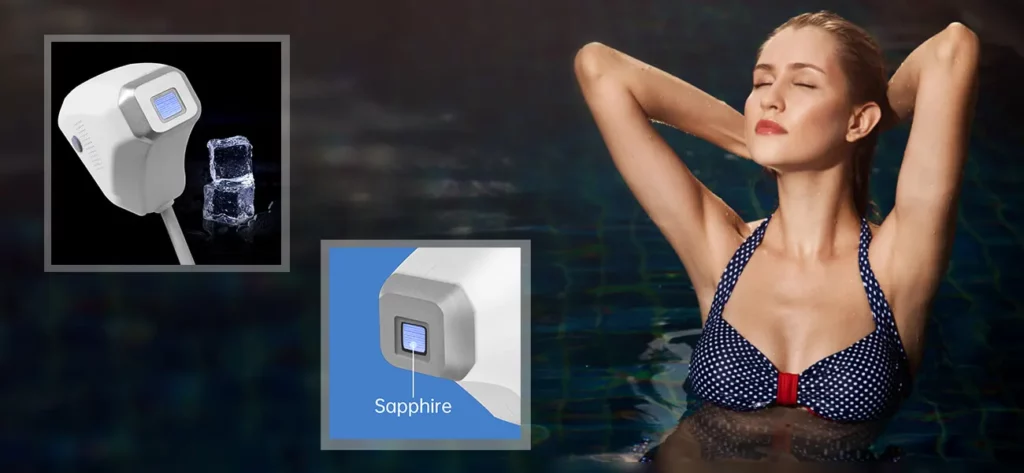
The presence of a cooling system is of the utmost importance in diode laser hair removal treatments. It serves to protect the epidermis (the outer layer of the skin) from burns and discomfort during the procedure.
The ViQure EpiPro utilizes advanced Thermoelectric Cooling (TEC) technology to provide continuous cooling throughout the treatment session, ensuring a safe and comfortable experience for the user.
The cooling system of the ViQure Laser includes a sapphire handle head, which has the ability to cool down to -5°C. This significant cooling effect helps to maintain a lower temperature on the surface of the skin, reducing the risk of thermal damage and making the treatment more tolerable.
The cooling process involves three stages: pre-cooling, parallel cooling, and post-cooling.
- During pre-cooling, the chilled sapphire window is applied to the skin before the laser pulse is emitted. This initial cooling helps to lower the temperature of the targeted area, minimizing discomfort and potential adverse effects.
- Parallel cooling occurs simultaneously with the delivery of laser pulses. The cooling system continues to provide a protective cooling effect on the skin surface, maintaining a controlled and safe temperature throughout the procedure. This parallel cooling contributes to a more comfortable treatment experience and helps prevent overheating of the epidermis.
- After each laser pulse, post-cooling is applied to the treated area. This post-cooling phase further soothes the skin, reducing residual heat sensation and promoting faster recovery.
The ability to adjust the cooling system settings on the ViQure EpiPro offers added flexibility and customization. Users can switch the cooling system on or off depending on their preferences and comfort levels.
Additionally, the intensity levels and frequency levels can be easily adjusted with a simple tap of a users to tailor the treatment parameters to your individual needs.
Pulsing Technique: SHR (Super Hair Removal) / Multiple Passes vs. HR (Hair Removal) / Single Pass
When it comes to diode laser hair removal, there are two commonly used pulsing techniques: Super Hair Removal (SHR) and Hair Removal (HR). These techniques differ in their approach to delivering laser energy for hair removal treatments.
The Hair Removal (HR) technique, also known as single pass, is typically associated with intense pulsed light (IPL) devices and some high-energy lasers. In HR mode, a single high-energy pulse is emitted and delivered to the treatment area.
This pulse releases a significant amount of energy within a short duration, resulting in a sharp temperature rise in the targeted hair follicles. However, this can also lead to a higher level of pain or discomfort for the individual undergoing the procedure.
Video: Hair Removal (HR) technique demo
On the other hand, the Super Hair Removal (SHR) technique, used by the ViQure EpiPro system, takes a different approach. SHR mode involves multiple passes or continuous motion of the laser handpiece over the treatment area. Instead of delivering a single high-energy pulse, SHR mode emits a series of lower fluence pulses in rapid succession.[12]
Video: Super Hair Removal (SHR) technique demo
The advantage of SHR mode lies in its ability to gradually heat the targeted hair follicles and surrounding tissues. By releasing repetitive pulses at lower fluences, the cumulative heat generated in the follicles increases over time. This sustained heat accumulation effectively damages the hair follicles, leading to long-lasting hair reduction. Additionally, the gradual heating process of SHR mode contributes to a reduced sensation of pain or discomfort during the treatment compared to HR mode.[15]
While IPL devices and some high-energy lasers commonly employ the HR technique with single passes, the ViQure EpiPro system utilizes the SHR technique with multiple passes or continuous motion. This distinction allows the product to provide a more comfortable and user-friendly experience for diode laser hair removal machine at home.
References: The Ultimate SHR vs. HR Guide – Which is Right for You?
Technical Specifications
| Hair Removing Technology | Diode Laser |
| Function | Hair removal + Skin rejuvenation |
| Application | At-Home and Commercial Use |
| Screen | 3.5″ color- touch LCD screen |
| Frequency Response | 1-6Hz (HR) / 1-5Hz (SR) |
| Cooling System | Semiconductor Cooling + Wind Cooling |
| Output Wavelength | 808nm |
| Laser Power | 150W |
| Maximum Energy Density | 20 J/cm2 |
| Flash Speed | N/A |
| Skin Tone Coverage | Fitzpatrick I-VI (All skin types) |
| Natural Hair Color Coverage | All hair colors, including gray, white, blonde, and red hair (requires more treatment sessions). |
| Safety Mechanisms | Advanced TEC (Thermoelectric Cooling), Use of cooling gel, SHR (Super Hair Removal) technique application, Free IPL glasses |
| Recommended Treatment Schedule & Results | Once a month for the first 3-6 months, maintain as necessary |
| Lifespan/No. of Flashes | 5 Million Pulses |
| Electrical Power | 300W |
| Handpiece Material | Medical plastics |
| Laser Output Spot Size | 12mm x 14mm |
| Handle Cooling Temperature | 0°C~5°C |
| Machine Size | 31cm x 27cm x 9cm |
| Weight | 5.5lbs (2.5kg) |
| Electrical Frequency | 60Hz |
| Electrical Voltage | 110VAC ±10% |
| Weather Condition(during the operation) | Temperature around: +15℃ to +30℃Relative humidity: 30% to 80%Atmospheric pressure: 86 kpa to 106 kpa |
| Weather Condition(during the transport of device ) | Temperature around: +5℃ to +55℃Relative humidity: 30% to 80%Atmospheric pressure: 86 kpa to 106 kpa |
| Against Electric Shock Protection Type | Type I |
| Against Electric Shock Protection Level | BF |
| Harmful Water Invade Type | Normal |
Safety
The shift to at-home hair removal and cosmetic treatments has led to the development of “smart” home-use devices that prioritize safety.
Manufacturers have implemented specific safety measures to prevent accidental injury to users and those nearby.
These miniaturized systems cater to consumer demands for privacy, cost-effectiveness, and advanced safety features, providing a convenient alternative to professional services.
Related: A Comprehensive Study on the Safety & Efficacy of At-Home Hair Removal Devices, Is At-Home Laser Hair Removal Safe? The Complete Safety Checklist for IPL Devices
Safety Certifications
The ViQure EpiPro holds essential safety certifications, including FDA (Food and Drug Administration) and CE (Conformité Européene). It has also met the requirements of RoHS safety standards.
These certifications and compliance ensure that the device has undergone rigorous testing and meets the necessary safety regulations.
Skin Protection
The ViQure EpiPro incorporates several safety measures to protect the skin during hair removal treatments:
- Cooling gel – The device utilizes a cooling gel that acts as a protective barrier, minimizing overheating risk and ensuring a comfortable experience.
- Built-in Cooling System – A dedicated cooling system is integrated into the device, continuously cooling the skin during the treatment session. This prevents discomfort and reduces adverse reactions.
- Super Hair Removal (SHR) Technique – The product employs the SHR technique, which delivers lower fluence levels in multiple passes. This approach reduces the risk of adverse effects while maintaining effective hair reduction.
With these skin protection measures in place, the ViQure Laser offers a safe and reliable solution for diode at home laser hair removal.
Eye Protection
The ViQure EpiPro prioritizes eye safety during hair removal treatments with the following measures:
- Free therapy glasses and goggles – The product includes protective eyewear for both the client and the operator. These specially designed eyewear items are supplied by the device company to ensure optimal ocular safety.
- Compliance with Safety Standards – The device adheres to established safety standards for eye protection. It meets the necessary power requirements and incorporates safety interlocks to minimize eye exposure.
By implementing these safety measures, the ViQure EpiPro aims to protect the eyes from potential harm and provide a safe hair removal experience.
Pain Mitigation and Comfort: Techniques for a Pain-free Hair Removal Experience
Pain is a common concern during hair removal treatments, but the ViQure Laser prioritizes user comfort for a pain-free experience.
Here are a few tips to make your hair removal treatments more comfortable:
- Adjust the energy levels – The ViQure EpiPro allows you to adjust the energy levels according to your comfort level. Start with a lower energy setting and increase it gradually until you find the right balance between effectiveness and comfort.
- Start with a lower frequency – If you are new to hair removal treatments or have a lower pain tolerance, begin with a lower frequency setting. Gradually increase the frequency as you become more accustomed to the sensation.
- Use the cooling system – Take advantage of ViQure's built-in cooling system. This feature cools and soothes the skin during treatments, minimizing discomfort. Ensure the cooling system is activated and functioning properly before starting your session.
- Numbing Cream – Applying a numbing cream before treatment can help minimize discomfort for users with sensitive skin or lower pain tolerance.
- Follow post-treatment care instructions – ViQure recommends using a cooling compress or a post-laser cream after each session. This helps calm the skin and alleviate discomfort. Follow their guidelines to ensure optimal recovery and skin care.
- Take breaks if needed – If you experience any excessive discomfort during the treatment, feel free to take short breaks between passes. Listen to your body and proceed at a pace that suits you.
- Stay consistent with treatments – Regular and consistent use of the ViQure device can lead to better results over time. By following the recommended treatment schedule, you can gradually reduce hair growth and minimize the discomfort associated with the procedure.
Remember, individual pain tolerance varies, so it's important to adjust the settings and follow these tips based on your personal comfort level.
By incorporating these suggestions into your hair removal routine, you can enhance your overall comfort and achieve desirable results with your ViQure device.
Instructions & User Guides
Compatibility Guide
When it comes to laser hair removal, compatibility is a significant factor to consider.
Unlike some other hair removal methods like IPL, the ViQure EpiPro is designed to be suitable for all skin types and body types, offering a professional-grade treatment experience.
This advanced device targets hair follicles effectively while minimizing the risk of adverse effects. In the following section, we will explore the compatibility of the ViQure EpiPro in more detail, considering various factors such as skin type, hair color, and other individual variables.
Understanding the broad range of compatibility offered by this device can help you make informed decisions about your hair removal journey.
Skin Type Compatibility
Understanding your skin type is crucial when considering diode laser hair removal. The Fitzpatrick scale is commonly used to classify different skin types based on their response to sunlight and melanin production. The scale ranges from Type I (very fair skin) to Type VI (deeply pigmented dark skin).
The Fitzpatrick scale categorizes individuals based on their skin's reaction to UV exposure, tanning ability, and susceptibility to sunburn. It helps determine the appropriate treatment parameters for laser hair removal.
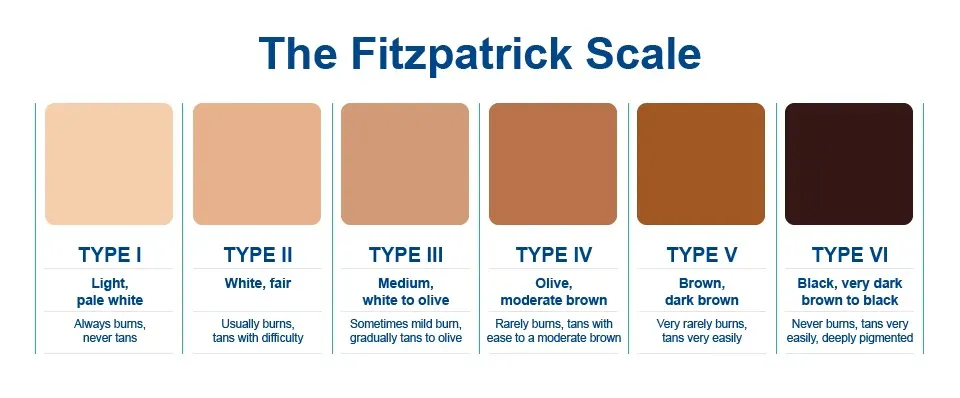
Diode laser technology has shown effective results across various skin types. Lighter skin types (Type I and II) typically require higher fluences and shorter pulse durations to achieve optimal hair removal results.
On the other hand, darker skin types (Type IV, V, VI) necessitate lower fluences and longer pulse durations to avoid surface skin injury while targeting the underlying pigmented hair follicles.[16, 17]
ViQure EpiPro is designed to accommodate all skin types efficiently and safely. The device's user-friendly interface includes photos representing Fitzpatrick skin types I to VI. Users can easily select their skin tone, and the system automatically adjusts the settings accordingly.


It's worth noting that diode laser technology, including the 805 nm wavelength used in ViQure EpiPro, has demonstrated effectiveness and efficiency in hair removal for mixed-race patients.[23]
While treating darker skin types presents certain challenges due to competition from epidermal melanin, the use of longer pulse durations allows for the delivery of higher fluences with acceptable postoperative complications.
For individuals with mixed race or skin tones between categories, choosing the closest option is recommended. However, if in doubt, selecting the darker option can provide an extra level of caution.

Here are some user tips for enhanced efficacy and comfort with skin color compatibility:
- Ensure proper skin tone selection – When using the ViQure Laser, choose the appropriate skin tone option from the provided photos on the interface. This ensures that the device automatically adjusts the settings for optimal treatment results.
- Choose the closest Fitzpatrick skin tone option – For individuals with mixed race or shades in between the Fitzpatrick skin tone categories, it is recommended to select the closest option available on the device's interface. If you find yourself unsure, it's generally safer to err on the side of caution and select the slightly darker option. This helps to ensure that the treatment parameters are adjusted to a level suitable for your skin tone. Remember, it's always important to prioritize safety and choose settings that minimize adverse reactions while still providing effective hair removal results.
- Conduct a patch test – Before starting the treatment, it is advisable to perform a patch test on a small area of the skin. This helps to assess how your skin responds to the laser and determine the ideal energy level for your comfort.
- Start with lower energy settings – If you have darker skin tones (Fitzpatrick Type IV, V, or VI), begin with lower energy settings and gradually increase if tolerated. This approach minimizes the risk of surface skin injury while effectively targeting hair follicles.
- Adjust for varying skin tones across your body – When treating areas with uneven skin tones, such as in the armpits or bikini area, it is recommended to adjust the energy level accordingly. Start with a lower energy setting for darker areas and gradually increase it if necessary. This approach helps to ensure effective hair reduction while minimizing the risk of skin discomfort or irritation. Remember to always prioritize your comfort and adjust the settings based on your individual tolerance and skin response.
- Stay consistent with treatment intervals – For best results, follow the recommended treatment intervals. Consistency in treatment sessions allows the laser to target actively growing hair follicles, leading to more effective hair reduction over time.
- Use the device in a well-lit room – Adequate lighting in the treatment area ensures accurate targeting of hair follicles. It also allows for better skin visibility and reduces the chances of accidental exposure to nearby areas.
By following these tips, you can tailor your treatments to suit you, ensuring both efficacy and comfort throughout the process.
Treatment Area / Body Area Compatibility
Laser hair removal can be performed on various body areas to achieve smooth and hair-free skin.
The most common areas treated for women include the legs, underarms, bikini area, upper lip, chin, and eyebrows. Additionally, some women may opt for laser hair removal on the arms, back, or abdomen based on their individual preferences and needs.
The most common areas treated for men include the back, chest, shoulders, neck, and face (beard area). These areas tend to have thicker and more dense hair growth, making them popular choices for men seeking long-term hair reduction or removal.
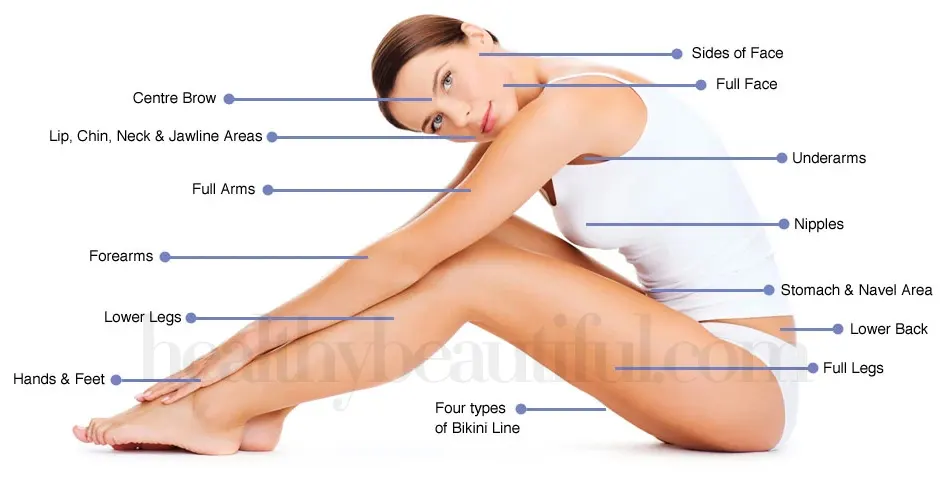

Diode lasers, like the ViQure EpiPro, offer excellent versatility in treating different body areas. Unlike IPL devices, diode lasers can target a wide range of areas with precision and efficiency.
It is important to note that IPL devices have certain limitations regarding treatment areas. They are not recommended for use above the cheekbones due to the risk of ocular damage. They can also only do bikini hair removal rather than Brazilian treatment.
The ViQure Laser is designed to effectively target all major body areas, including above the cheekbones and a full Brazilian. No FDA-approved IPL device that we know of has been approved for these areas.
On the device's hair removal interface, users can select the desired area from photos that include options such as the face, armpits, arms, chest, back, bikini area, and legs. The device optimizes its settings for you accordingly.
Here are some things to note to enhance comfort and efficacy:
- For those with low pain tolerance – If you're a beginner or have a low tolerance for discomfort, it's advisable to start with less sensitive areas such as the legs and gradually move towards more sensitive areas like the armpits. This allows you to acclimate to the treatment and better manage any potential discomfort.
- For above the cheekbones – To enhance eye protection, wear the therapy glasses or goggles provided in the package.
- On sensitive areas like the face and underarms – Start with lower energy settings and gradually increase if tolerated. Avoid treating directly over the eyes or eyebrows.
- For large areas like the arms and legs – Divide the area into sections for a more effective treatment. Use higher energy settings for areas with coarse or stubborn hair, and lower settings for more sensitive areas such as the ankles or knees. However, you can adjust the energy settings based on your comfort level and skin response.
- For the chest – If treating this area makes you uncomfortable, use lower energy settings especially for darker or thicker hair. Consider applying a cooling compress before and after treatment to minimize discomfort.
- For the back – Seek assistance from a partner or use a mirror for hard-to-reach areas. Adjust the device's position and angle for optimal coverage.
- In bikini areas – Start with lower energy settings and gradually increase as tolerated. Take extra caution around sensitive areas and avoid treating directly on mucous membranes.
- For full Brazilian – To ensure optimal results and safety, it is recommended to use lower energy settings when treating areas with darker skin tone and hair colors.
The ViQure EpiProstands out as superior body area compatibility compared to IPL devices. It offers an easy-to-use interface, precise targeting of various body areas, and adjustable settings that ensure optimal results even in darker areas of the body.
This is an incredible edge that make this one of the best diode laser hair removal at home.
Hair Color Compatibility, Density, & Thickness
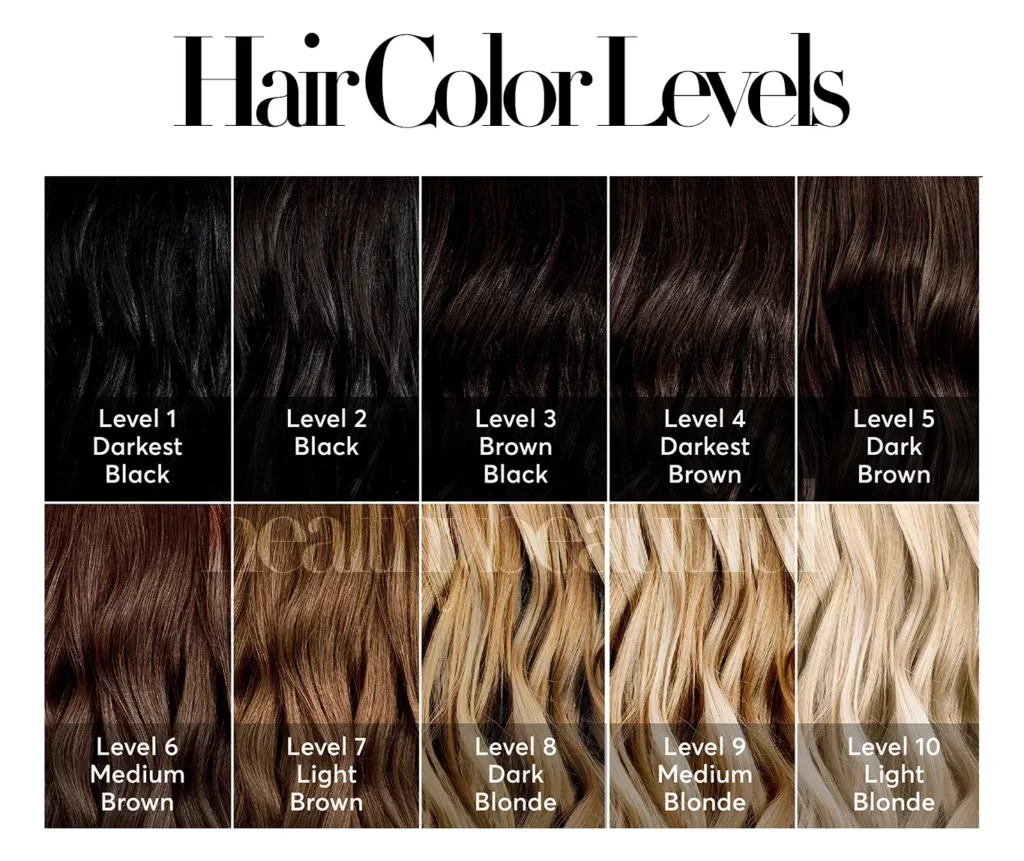
Diode laser works by targeting the melanin pigment present in hair follicles. Melanin absorbs laser energy, which is then converted into heat, damaging the hair follicle and inhibiting hair growth.
Diode lasers are most effective on dark, coarse hair due to their higher melanin content, as they absorb laser energy more efficiently. Lighter hair colors, such as gray, white, blonde, or red, have less melanin and require more treatment sessions in comparison to darker hair. However, advancements in technology have improved the efficacy of lighter hair colors compared to other laser or IPL devices.
Thicker, coarser hairs tend to respond better to laser hair removal as they have more melanin and provide a larger target for laser energy. Thinner, finer hairs may also require additional treatment sessions to achieve desired results, as they contain less melanin and are more challenging to target effectively.[4]
The ViQure Laser is designed to effectively treat a wide range of hair colors and thicknesses. While it is most efficient on dark, coarse hair, it also offers improved results on lighter hair colors compared to other devices. The adjustable settings and customizable treatment options allow for optimized outcomes based on individual hair characteristics.
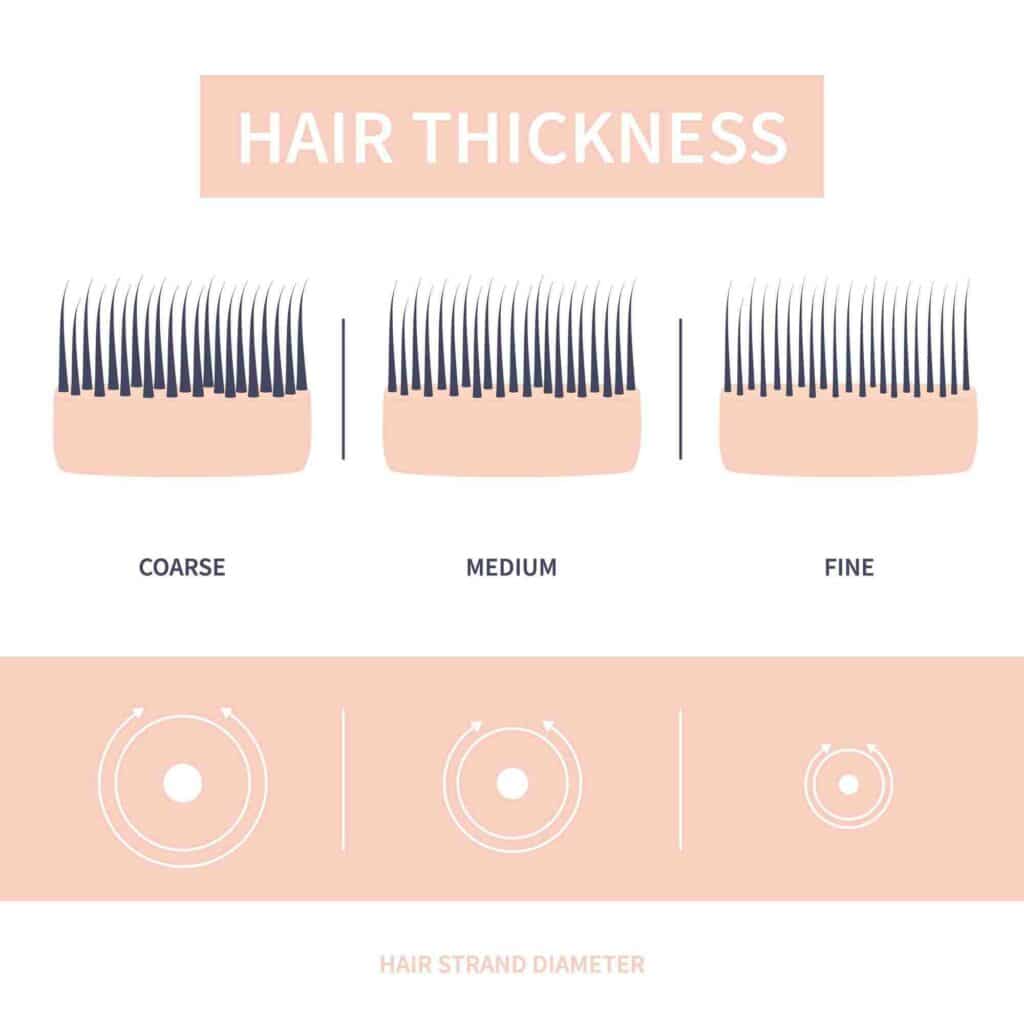
Tips on how to optimize results with regards to hair color and thickness:
- For dark, coarse hair -The diode laser is highly effective, and you can use the device at standard settings for optimal results.
- For lighter hair colors – Consider increasing the energy level or adjusting the treatment settings to ensure sufficient laser energy absorption.
- For thinner, finer hairs – It may be necessary to undergo additional treatment sessions or increase the energy level to effectively target these hairs.
- Consistency is key – Follow the recommended treatment schedule and avoid long intervals between sessions to ensure consistent and effective hair removal.
By considering hair color, density, and thickness, and applying these tips, you can optimize the results of your laser hair removal treatments with the ViQure EpiPro, achieving smoother and hair-free skin.
Treatment Plan & Frequency
To achieve effective and lasting results with laser hair removal, it is crucial to establish a well-structured treatment plan.
The ViQure Laser offers a convenient treatment schedule with sessions spaced approximately once a month over 3-6 months, with follow-up sessions as needed.
This treatment plan is similar to that of a professional laser hair removal procedure in clinics.
It provides optimal time for the laser to target hair follicles in different growth cycles and achieve significant hair reduction.
This once-a-month interval sets the ViQure EpiPro apart from many IPL devices, which often require treatment sessions once a week. This extended interval offers convenience and flexibility in comparison.
Related: How Often Can You Do IPL/At-Home Laser Hair Removal?
How-to use the ViQure EpiPro
Here are step-by-step instructions for each phase: Pre-treatment, During treatment, and Aftercare.
I. Pre-Treatment
Before starting laser hair removal, follow these steps:
- Clean the treatment area – Use a mild facial cleanser to cleanse the treatment area thoroughly. Ensure that the skin is clean and free of oils, lotions, or residues.
- Shave hair on treatment areas – Shave the target areas with a razor. In this way, the laser can directly target the hair follicles, maximizing its effectiveness. Do not use other hair removal methods like waxing or plucking, as removing the roots will render the treatment useless.
- Wear therapy glasses – This is included in the package for ocular protection
- Apply cooling gel – Apply a thin layer (around 1-2mm) of cold gel to the treatment area. This helps to cool and protect the skin during the laser hair removal process.
II. During Treatment
Follow these steps while performing the laser hair removal treatment:
- Start the system – Power on the laser hair removal device and navigate to the Hair Removal interface.
- Set treatment parameters – Adjust the treatment parameters according to the individual patient's needs and the specific treatment area. Ensure that the settings are appropriate for the patient's skin tone and hair color.
- Begin the treatment – Press the cooling and the standby/ready button to start the treatment using the SHR technique. During the treatment, observe the patient's response and adjust the treatment parameters if necessary.
- Avoid prolonged exposure – Avoid keeping the treatment head in the same spot for too long to prevent excessive heat buildup. Both the operator and the patient should take the necessary precautions to protect themselves from potential injury.
- Complete the treatment within 3-5 minutes per area – After completing the treatment session, turn off the power switch. Remove the cold gel from the treatment site and apply a cold compress or post-laser cream to soothe the skin.
- Clean and disinfect the treatment head – Use a warm towel to clean the treatment head, ensuring it is free of gel or debris. Disinfect the treatment head using a cotton ball dipped in disinfectant.
- Store the device -Place the clean and sterilized treatment head in the package box. Remove the power plug from the device.
III. Aftercare
After completing the diode laser for home use, follow these guidelines for post-treatment care:
- Apply a cold compress – Immediately after the treatment, apply a cold compress to the treated area for 5-10 minutes. This reduces swelling or discomfort.
- Avoid hot water and intense activities – Refrain from exposing the treated area to hot water, such as hot showers or baths, for the first 24 hours after treatment. Avoid intense physical activities, saunas, and steam rooms for 3 to 7 days to allow the skin to heal.
- Sun protection – Protect the treated area from sun exposure by applying sunscreen with a minimum SPF 30. This will help protect the skin from UV radiation and prevent hyperpigmentation. Reapply sunscreen regularly, especially in the summer when UV rays are stronger. Consider using sunshade or wearing a sunshade cap for added protection.
- Avoid irritants and photosensitive foods – Avoid using harsh soaps, scrubs, facial peels, or topical acne therapies on the treated area for at least 2 days. Additionally, limit your intake of spicy, seafood, pungent foods, and photosensitive vegetables such as celery, white radish, spinach, and coriander.
- Avoid waxing or plucking – Refrain from waxing or plucking the hair in the treated area, as this may interfere with the hair removal process. However, shaving is acceptable if desired.
- Follow skincare restrictions – Avoid using scrubs, glycolic acid, retinol creams, and chemical peels on the treated area for the recommended duration provided by your healthcare professional.
- Maintain cleanliness and hygiene – Keep the treats clean and hydrated.
By following these post-treatment guidelines, you can optimize the results of the laser hair removal treatment and maintain healthy, smooth skin in the long term.
If you have concerns or experience unusual side effects after treatment, consult a healthcare professional for further guidance and support.
Contraindications
When using the ViQure EpiPro or any other medical device, it is essential to be aware of its contraindications.
Contraindications are specific conditions or circumstances in which a particular treatment or product is not recommended or should be avoided altogether.
Understanding and adhering to contraindications is crucial for the safe and effective use of the ViQure Laser.
General Contraindications
Below are examples of specific contraindications to consider:
- Pregnancy and breastfeeding – Hormonal changes during pregnancy can affect skin sensitivity, and the effects of laser treatments on fetal development are not yet fully understood. Similarly, it is recommended to refrain from the procedure while breastfeeding to minimize any potential risks to the infant.
- Skin infections, open wounds, or lesions in the treatment area – These conditions can increase infection risk, delay wound healing, or cause discomfort during the procedure.
- Active skin conditions (e.g., eczema, psoriasis) in the treatment area – These conditions can make the skin more sensitive, prone to irritation, and may interfere with the treatment's effectiveness.
- History of keloid scarring or abnormal wound healing – The treatment may potentially exacerbate these conditions or lead to new keloids. Consulting with a healthcare professional or dermatologist is recommended in such cases.
- History of photosensitivity or adverse reactions to light-based treatments – These reactions may include excessive skin redness, blistering, or pigment changes. Consulting with a healthcare professional or dermatologist can help determine the suitability of the treatment for your specific circumstances.
- Tattooed or pigmented areas – Laser hair removal targets the pigment in the hair follicles, which can also be absorbed by pigmented areas of the skin, including tattoos. Directing laser energy towards these areas can result in adverse effects, such as pigmentation changes, blistering, or discomfort. It is recommended to avoid treating these areas to prevent potential complications.
- Recently tanned or sunburned skin – The increased melanin content in the skin can make it more prone to absorbing laser energy, leading to a higher risk of burns, blistering, or pigmentation changes. It is advisable to wait until the tan fades and the skin has fully recovered from a sunburn before undergoing laser hair removal.[18]
- Areas with recent chemical peels or laser resurfacing – These treatments can cause temporary changes in the skin, such as increased sensitivity, thinning, or inflammation. Laser hair removal on recently treated areas may exacerbate these effects and cause complications. It is recommended to wait until the skin has fully healed and stabilized before proceeding with laser hair removal.
- Areas with permanent fillers or implants – The laser energy can heat and potentially damage these materials, leading to adverse effects or compromising their integrity. It is important to discuss any existing fillers or implants with a healthcare professional or dermatologist before considering laser hair removal. This is to ensure safety and avoid complications.
It is essential to remember that these examples are not an exhaustive list of general contraindications for diode laser hair removal. By being aware of and respecting the general contraindications, you can ensure a safer and more effective laser hair removal experience.
Medical and Health Conditions
When considering diode laser hair removal, certain medical conditions that may require caution or consultation with a healthcare professional. While laser hair removal is generally safe, these conditions may require additional considerations to ensure the safety and effectiveness of the treatment.
Below are examples of medical conditions to consider:
- Diabetes or impaired circulation – Individuals with diabetes or impaired circulation may experience delayed wound healing or compromised skin health. Laser hair removal may pose a higher risk of complications in these cases. It is advisable to consult with a healthcare professional before undergoing the treatment to evaluate the suitability and determine appropriate precautions.
- Epilepsy or history of seizures – The flashing light emitted during laser hair removal may trigger seizures in individuals with epilepsy or those with a history of seizures. It is crucial to discuss this condition with a healthcare professional before proceeding with the treatment. Precautions, such as adjusting the settings or using protective eyewear, may be recommended to minimize the risk.
- Cancer or a history of skin cancer – If you have a history of cancer or skin cancer, consult with your healthcare provider before undergoing laser hair removal. They can assess the specific circumstances and advise on the appropriateness of the treatment. In some cases, laser hair removal may be contraindicated or require special precautions to avoid interfering with ongoing treatments or compromising skin integrity.
- Immunodeficiency or use of immunosuppressive medications – Individuals with immunodeficiency or those using immunosuppressive medications may have a compromised immune system, which can affect the body's ability to heal and respond to laser treatment. It is essential to discuss these conditions with a healthcare professional to evaluate the risks and benefits of laser hair removal. This will enable you to determine the best approach.
Medications and Topical Treatments
Certain medications and topical treatments may interfere with the treatment's effectiveness or pose potential risks. These substances can affect the skin's response to the laser and increase the likelihood of adverse reactions.
Here are some examples:
- Photosensitizing medications – Certain medications can make your skin more sensitive to light and increase the risk of adverse reactions during laser hair removal. Photosensitizing medications such as tetracyclines, nonsteroidal anti-inflammatory drugs (NSAIDs), and a variety of antibiotics fall into this category. It is crucial to inform your healthcare professional about any medications you are currently taking to determine if they may impact treatment. Your healthcare provider may advise discontinuing these medications for a certain period before and after laser hair removal to minimize potential risks.
- Topical corticosteroids or immunosuppressive creams – Topical corticosteroids and immunosuppressive creams are commonly used to treat various skin conditions, including eczema, psoriasis, and dermatitis. However, these products can affect skin healing and immune response. Discuss the use of these topical treatments with your healthcare professional prior to laser hair removal. They can provide guidance on whether it is safe to continue using these products during the treatment period or if temporary discontinuation is necessary to ensure optimal results and reduce the risk of complications.
Remember, the information provided here serves as examples and is not an exhaustive list that may interfere with diode laser hair removal. Every individual is unique, and the interaction between medications and laser treatments can vary. Always consult with a healthcare professional for personalized advice based on your specific medical history and current medications.[11]
By providing comprehensive information about your medications and conditions, you and your healthcare provider can work together to develop a safe and effective plan for diode laser hair removal that takes into account any potential interactions and minimizes risks. Your safety and well-being are of the utmost importance, and open communication with your healthcare provider will ensure that your treatment is tailored to your specific needs.
Side Effects
Diode laser hair removal is a widely used and effective method of long-term hair reduction. While it is generally safe, it is important to know the potential side effects that may occur. Understanding these side effects and their expected duration can help you make an informed decision and manage your expectations.
Potential Risks & Side Effects of Diode Laser Hair Removal
Here are some common side effects for diode laser at home hair removal and their expected duration:
- Skin Redness – It is common to experience temporary skin redness immediately after the treatment. This redness subsides within a few hours. In rare cases, it may last for a couple of days.
- Mild Discomfort – Some individuals may experience mild discomfort during the procedure, often described as a sensation of heat or a rubber band snapping against the skin. This discomfort is temporary and usually resolves shortly after the treatment.
- Swelling – In some cases, there may be mild swelling around the treated area. This swelling is usually temporary and should diminish within a few hours or a day.
- Skin Sensitivity – Your skin may become more sensitive following the treatment, similar to a sunburn-like sensation. This sensitivity typically resolves within a few hours or days.
- Burns – In rare cases, the laser energy can cause burns if not used properly or set at inappropriate settings. Burns can range from mild to severe and require medical attention. The key is to select the correct parameters to minimize this risk.
- Pigment Changes – Some individuals may experience temporary skin pigmentation changes, such as darkening (hyperpigmentation) or lightening (hypopigmentation) of the treated area. These changes are usually temporary and fade over time, but make sure to protect the skin from sun exposure to minimize the risk.
Managing Side Effects and Complications
If you experience discomfort, redness, or swelling after diode laser hair removal, there are several steps you can take to manage these side effects:
- Apply a Cool Compress – To alleviate discomfort and reduce redness or swelling, apply a cool compress or ice pack wrapped in a thin cloth to the affected area. This can soothe the skin and minimize inflammation.
- Use Over-the-Counter Creams or Lotions – Over-the-counter creams or lotions containing aloe vera or hydrocortisone can relieve mild skin irritation. Follow the instructions on the product packaging and apply it to the affected area as directed.
- Wear Loose Clothing – Choose loose-fitting clothing made of breathable fabrics to allow the skin to breathe and minimize friction or irritation in the treated area.
While most side effects of laser hair removal are mild and temporary, there are instances where you may need medical attention.
Contact a healthcare professional if you experience any of the following:
- Severe Pain or Discomfort – If you are experiencing intense or prolonged pain that is not alleviated by over-the-counter pain relievers, it is important to consult a healthcare professional for further evaluation.
- Persistent Swelling or Redness – If swelling or redness persists for an extended period, or if it worsens over time, it is advisable to seek medical advice. This may indicate an underlying issue that requires attention.
- Development of Blisters or Open Sores – If you notice blisters, open sores, or signs of infection in the treated area, it is crucial to consult a healthcare professional promptly. They can assess the situation and provide appropriate treatment.
If you experience post-treatment pigmentation changes or skin irritation, consider the following tips for managing these issues:
- Sun Protection – Protect the treated area from direct sun exposure by wearing clothing that covers the area or using a broad-spectrum sunscreen with SPF 30 or higher. This helps prevent further pigmentation changes and allows the skin to heal properly.
- Avoid Harsh Chemicals – Refrain from using harsh skincare products or cosmetics that may further irritate the skin. Opt for gentle and non-irritating products during healing.
- Moisturize Regularly – Keep the treated area moisturized to soothe the skin and promote healing. Choose a mild and hypoallergenic moisturizer suitable for your skin type.
- Time and Patience – Post-treatment pigmentation changes or skin irritation fade over time. Give your skin ample time to recover, and avoid additional laser treatments until fully healed.
If pigmentation changes or skin irritation persist or worsen despite your efforts, it is advisable to consult a dermatologist or healthcare professional. They can provide personalized guidance and recommend suitable treatments to address your specific concerns.
Remember, open communication with your treatment provider is essential throughout the process. They can provide valuable advice, monitor your progress, and address any questions or concerns you may have.
Long-term Effects and Considerations
Diode laser hair removal is known for its long-lasting results, and many individuals experience a significant reduction in hair growth after completing a series of treatment sessions.
However, understand that long-term effects may vary depending on various factors, including individual characteristics and treatment adherence.
Here are some key points to consider:
- Hair Reduction – Laser hair removal can reduce hair growth substantially in the treated areas. While some individuals may achieve permanent hair loss, others may experience hair regrowth over time, albeit with finer and lighter hair.
- Maintenance Sessions – To maintain desired results, periodic maintenance sessions may be necessary. These sessions help target any remaining hair follicles that were not fully affected during the initial treatments. Maintenance sessions vary depending on individual needs and hair regrowth patterns.
- Individual Response – Laser hair removal effectiveness varies from person to person. Factors such as hair color, skin type, and hormonal changes can influence treatment outcomes. It is important to set realistic expectations and to determine the suitability of laser hair removal for your specific case.
Potential Hair Regrowth or Hair Texture Changes
- Potential Hair Regrowth – While laser hair removal can significantly reduce hair growth, some individuals may experience minimal hair regrowth over time. This can occur due to hormonal changes, new hair follicles entering the growth phase, or individual variations in response to treatment. Maintenance sessions can help manage and minimize regrowth.
- Changes in Hair Texture – Laser hair removal generally does not alter existing hair texture. However, in some cases, individuals may notice temporary changes in hair texture, such as hair becoming finer or lighter in color. These changes are typically temporary and do not cause significant issues.
Importance of Maintenance Sessions & Ongoing Care
- Maintenance Sessions – To ensure long-term results when using diode laser hair removal at home, do additional monthly sessions as needed. These sessions target any regrowth and help maintain the desired hair reduction over time.
- Ongoing Skincare – Proper skincare is crucial after laser hair removal. It is recommended to protect the treated areas from excessive sun exposure and use sunscreen with a high SPF. Additionally, following a gentle skincare routine and avoiding harsh chemicals or exfoliation in the treated areas can help maintain skin's health.
Remember, individual experiences may vary. By following post-treatment instructions, performing maintenance sessions, and maintaining proper skincare, you can maximize the long-term benefits of laser hair removal.
Technical Warnings

When using this laser diode hair removal machine, it is crucial to understand and follow the manufacturer's technical warnings. These warnings are designed to ensure your safety and device effectiveness. Ignoring or neglecting these warnings may result in adverse effects, equipment damage, or voiding of the warranty.
The ViQure EpiPro utilizes advanced technology and requires proper handling and maintenance to operate safely. By familiarizing yourself with these technical warnings, you can minimize the risk of accidents, optimize the device's performance, and achieve the desired results.
To ensure safe and effective use of this diode laser hair removal machine for home, it is essential to adhere to the following guidelines:
- Grounding and Authorized Repairs – Only authorized individuals can repair the device. Unauthorized repairs may damage equipment and void the warranty.
- Avoid Flammable Materials While in Use – Ensure that the disinfectant alcohol has completely evaporated before using the device.
- Emergency Shutdown – In case of an emergency, immediately turn off the equipment. This step can help prevent further damage or potential risks.
- Avoid using the device in an environment with corrosive gases, dust, and particles – Corrosive gases can harm the device's electronic and optical components, while increased dust and particles in the air may damage filters and electrical components. Additionally, ensure that the environment meets the specified temperature and humidity range required for equipment optimal performance.
- Blocked Cooling Vents – Avoid using if cooling vents are blocked to prevent overheating. Make sure the fan is always on.
- Physical Damage – Using a damaged device can pose safety risks and affect its performance. If you notice any visible damage, such as cracks, frayed wires, or malfunctioning parts, discontinue use and contact ViQure for assistance.
By adhering to these technical warnings, you can create a safe and suitable environment for using the ViQure EpiPro, minimizing potential risks and ensuring its longevity and effectiveness.
Cleaning & Storage
Proper cleaning and storage of the ViQure EpiPro are essential for maintaining its performance and longevity.
Follow these guidelines to ensure optimal results and prolong your device's lifespan:
- Clean the main machine with a soft, wet cloth to remove dust or residue. Ensure that no liquid flows into the inside of the device, as this can damage electronic components.
- Regularly clean the treatment handle lens. During the treatment process, a small amount of pigment particles may splash onto the treatment lens, which can affect the laser output. To clean the lens, use lens paper or a cotton ball soaked in absolute ethanol. Gently wipe the treatment lens to remove any particles or smudges, ensuring it remains clean and clear for optimal performance.
- Store in a clean and dry environment, away from excessive heat, moisture, or direct sunlight. These conditions can damage the device and its components.
- Keep the device in a secure location protected from accidental bumps or falls, reducing the risk of physical damage.
By following proper cleaning and storing procedures, the ViQure Laser you can maximize its performance, durability, and overall lifespan.
Troubleshooting
If you encounter any issues or problems with the ViQure EpiPro refer to the following troubleshooting guide to identify potential solutions:
- No display on the LED screen:
- Check the electric wire connection to ensure it is securely plugged in.
- Verify the circuit breaker and fuse wire for any faults.
- Ensure that the power supply switch is turned on.
- The trigger button is not working:
- Check if the power supply switch located at the back of the device is turned on.
- The device does not power on:
- Check the power supply to ensure it is stable and properly connected.
- Low or no energy laser output:
- Verify that the device's voltage is adequate for normal operation.
- Check the laser reflective mirror for dirt or debris. Clean it if necessary.
- If the issue persists, it may indicate internal damage to the treatment handle. In such cases, a replacement handle is recommended.
- Examine the treatment handle to ensure the head reflective mirror is not damaged.
- If the treatment handle becomes excessively hot, turn off the machine and allow it to cool for approximately 30 minutes before using it again. This is a normal process of heat dissipation during startup.
- If you suspect the treatment head has reached the end of its working life, please contact ViQure for replacement options.
- The treatment handle fell out of the handle holder:
- Inspect the handle for damage. If damaged, replace it with a new handle.
- The cooling system temperature is too high:
- Turn off the device for a few minutes to reset the cooling system.
- Please contact ViQure for further assistance if the cooling system is still not functioning properly.
If you encounter any other issues or if the troubleshooting steps do not resolve the problem, it is recommended to reach out to ViQure for further technical support and guidance.
References:
- Gottschaller, C., & Hohenleutner, U. (2006). Laser-und lichtepilation. Lasertherapie in der Dermatologie, 179-192.
- Wölz, M., Zorn, M., Pietrzak, A., Kindsvater, A., Meusel, J., Hülsewede, R., & Sebastian, J. (2015, February). 760nm: a new laser diode wavelength for hair removal modules. In Components and Packaging for Laser Systems (Vol. 9346, pp. 71-79). SPIE.
- Bouzari, N., Tabatabai, H., Abbasi, Z., Firooz, A., & Dowlati, Y. (2004). Laser hair removal: comparison of long‐pulsed Nd: YAG, long‐pulsed alexandrite, and long‐pulsed diode lasers. Dermatologic surgery, 30(4), 498-502.
- Shirkavand, A., Ataie-Fashtami, L., Sarkar, S., Alinaghizadeh, M. R., Fateh, M., Zand, N., & Djavid, G. E. (2012). Thermal damage patterns of diode hair-removal lasers according to various skin types and hair densities and colors: A simulation study. Photomedicine and laser surgery, 30(7), 374-380.
- Handrick, C., & Alster, T. S. (2001). Comparison of long‐pulsed diode and long‐pulsed alexandrite lasers for hair removal: a long‐term clinical and histologic study. Dermatologic surgery, 27(7), 622-626.
- Eremia, S., Li, C., & Newman, N. (2001). Laser hair removal with alexandrite versus diode laser using four treatment sessions: 1‐year results. Dermatologic surgery, 27(11), 925-930.
- Bäumler, W., Scherer, K., Abels, C., Neff, S., Landthaler, M., & Szeimies, R. M. (2002). The Effect of Different Spot Sizes on the Efficacy of Hair Removal Using a Long‐Pulsed Diode Laser. Dermatologic surgery, 28(2), 118-121.
- Littler, C. M. (1999). Hair removal using an Nd: YAG laser system. Dermatologic clinics, 17(2), 401-430.
- Rogachefsky, A. S., Silapunt, S., & Goldberg, D. J. (2002). Evaluation of a new super‐long‐pulsed 810 nm diode laser for the removal of unwanted hair: The concept of thermal damage time. Dermatologic surgery, 28(5), 410-414.
- Sadick, N. S., & Prieto, V. G. (2003). The use of a new diode laser for hair removal. Dermatologic surgery, 29(1), 30-34.
- Raj Kirit, E. P., Sivuni, A., Ponugupati, S., & Gold, M. H. (2021). Efficacy and safety of triple wavelength laser hair reduction in skin types IV to V. Journal of Cosmetic Dermatology, 20(4), 1117-1123.
- Pai, G. S., Bhat, P. S., Mallya, H., & Gold, M. (2011). Safety and efficacy of low-fluence, high-repetition rate versus high-fluence, low-repetition rate 810-nm diode laser for permanent hair removal–A split-face comparison study. Journal of Cosmetic and Laser Therapy, 13(4), 134-137.
- Zhou, Z. C., Guo, L. F., & Gold, M. H. (2011). Hair removal utilizing the LightSheer Duet HS hand piece and the LightSheer ET: a comparative study of two diode laser systems in Chinese women. Journal of Cosmetic and Laser Therapy, 13(6), 283-290.
- Paasch, U., Wagner, J. A., & Paasch, H. W. (2015). Novel 755-nm diode laser vs. conventional 755-nm scanned alexandrite laser: Side-by-side comparison pilot study for thorax and axillary hair removal. journal of Cosmetic and Laser Therapy, 17(4), 189-193.
- Li, W., Liu, C., Chen, Z., Cai, L., Zhou, C., Xu, Q., … & Zhang, J. (2016). Safety and efficacy of low fluence, high repetition rate versus high fluence, low repetition rate 810-nm diode laser for axillary hair removal in Chinese women. Journal of Cosmetic and Laser Therapy, 18(7), 393-396.
- Hussain, M., Suwanchinda, A., Charuwichtratana, S., & Goldberg, D. J. (2003). A new long pulsed 940 nm diode laser used for hair removal in Asian skin types. Journal of Cosmetic and Laser Therapy, 5(2), 97-100.
- Adrian, R. M., & Shay, K. P. (2000). 800 nanometer diode laser hair removal in African American patients: a clinical and histologic study. journal of Cutaneous laser Therapy, 2(4), 183-190.
- Rogachefsky, A. S., Silapunt, S., & Goldberg, D. J. (2001). Evaluation of a super long pulsed 810-nm diode hair removal laser in suntanned individuals. Journal of Cutaneous Laser Therapy, 3(2), 57-62.
- Jo, S. J., Kim, J. Y., Ban, J., Lee, Y., Kwon, O., & Koh, W. (2015). Efficacy and safety of hair removal with a long-pulsed diode laser depending on the spot size: a randomized, evaluators-blinded, left-right study. Annals of Dermatology, 27(5), 517-522.
- Ormiga, P., Ishida, C. E., Boechat, A., & Ramos-e-Silva, M. (2014). Comparison of the effect of diode laser versus intense pulsed light in axillary hair removal. Dermatologic Surgery, 40(10), 1061-1069.
- Bouzari, N., Tabatabai, H., Abbasi, Z., Firooz, A., & Dowlati, Y. (2005). Hair removal using an 800‐nm diode laser: comparison at different treatment intervals of 45, 60, and 90 days. International journal of dermatology, 44(1), 50-53.
- Williams, R. M., Gladstone, H. B., & Moy, R. L. (1999). Hair removal using an 810 nm gallium aluminum arsenide semiconductor diode laser: A preliminary study. Dermatologic surgery, 25(12), 935-937.
- Załęska, I., & Atta-Motte, M. (2019). Aspects of diode laser (805 nm) hair removal safety in a mixed-race group of patients. Journal of Lasers in Medical Sciences, 10(2), 146.
- Goldberg, D. J. (2018). One‐year follow‐up results of hair removal using an 810 nm diode laser. Journal of Cosmetic Dermatology, 17(5), 775-778.
- Greppi, I. (2001). Diode laser hair removal of the black patient. Lasers in Surgery and Medicine: The Official Journal of the American Society for Laser Medicine and Surgery, 28(2), 150-155.
- Barolet, D. (2012). Low fluence–high repetition rate diode laser hair removal 12‐month evaluation: Reducing pain and risks while keeping clinical efficacy. Lasers in Surgery and Medicine, 44(4), 277-281.
- Koo, B., Ball, K., Tremaine, A. M., & Zachary, C. B. (2014). A comparison of two 810 diode lasers for hair removal: low fluence, multiple pass versus a high fluence, single pass technique. Lasers in Surgery and Medicine, 46(4), 270-274.
- Zins, J. E., Alghoul, M., Gonzalez, A. M., & Strumble, P. (2008). Self-reported outcome after diode laser hair removal. Annals of plastic surgery, 60(3), 233-238.
- Bäumler, W., Scherer, K., Abels, C., Neff, S., Landthaler, M., & Szeimies, R. M. (2002). The Effect of Different Spot Sizes on the Efficacy of Hair Removal Using a Long‐Pulsed Diode Laser. Dermatologic surgery, 28(2), 118-121.

